Art Basel Miami Beach:
The Main Trends of the Week of Contemporary Art
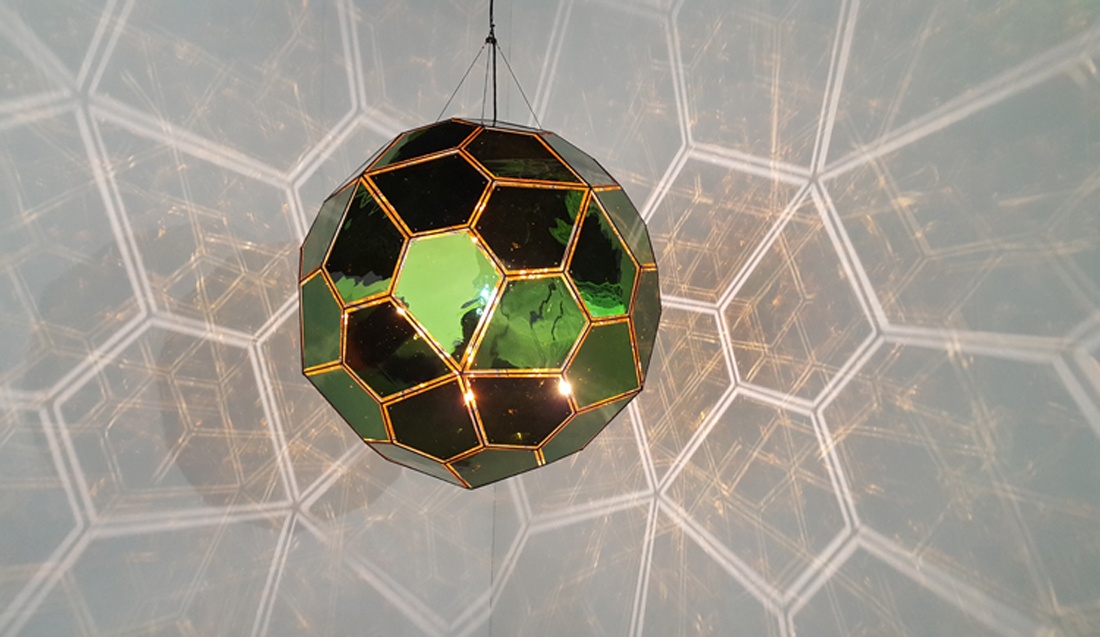
Penta Hexe, Green, Gold installation by the artist Olafur Eliasson (2017) at the Tanya Bonakdar Gallery.
For those not in the know, the title Art Basel Miami Beach evokes images of celebrities flying into the city to flock to poolside or oceanfront parties. Indeed, Miami locals have to put up with uncharacteristic spots of bad traffic as celebrity visitors clog the streets. And yet, Art Basel Miami Beach is about art first and foremost!
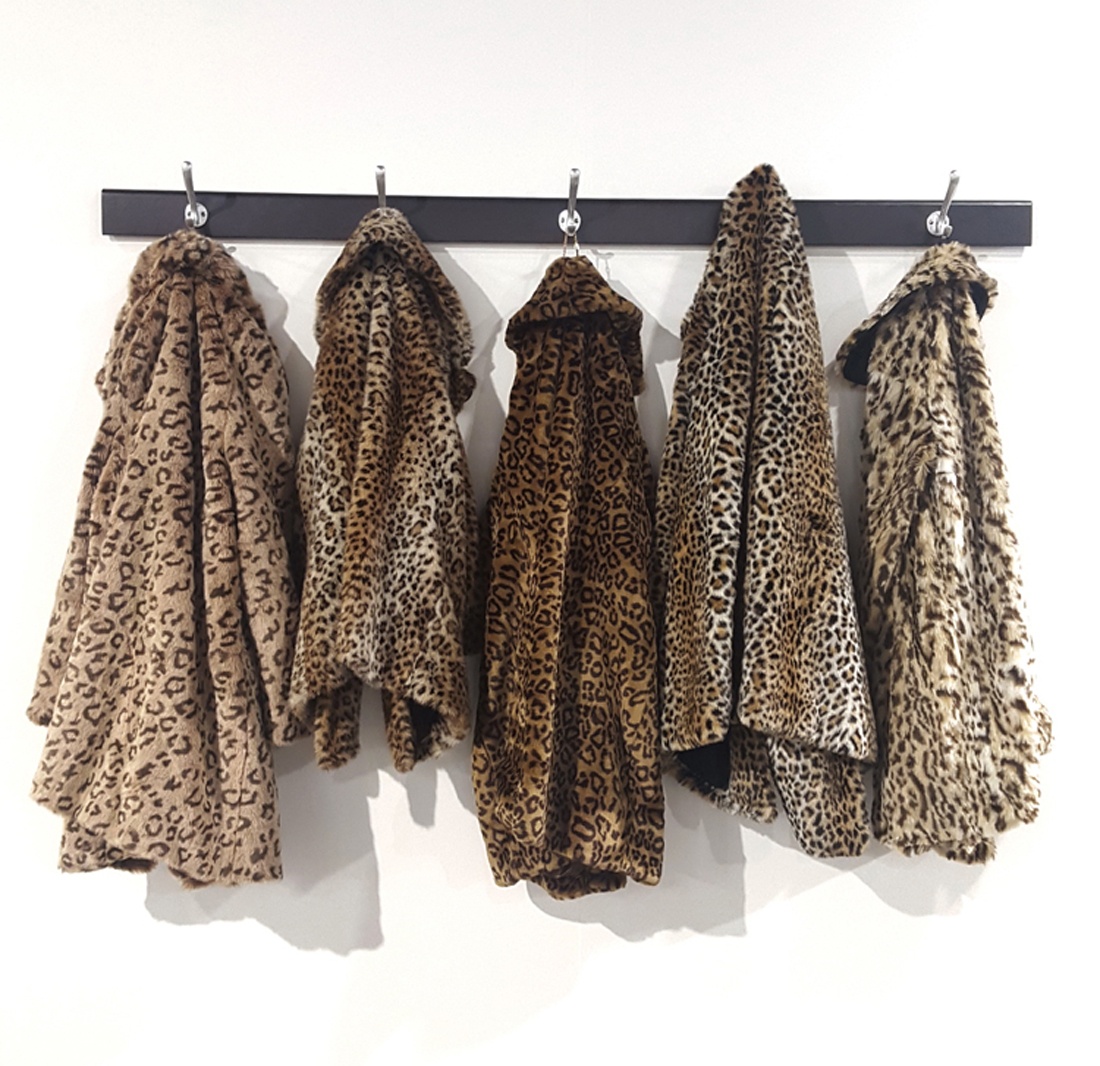
Fake Five by the FORT artist duo of Alberta Niemann and Jenny Kropp (2017).
December traditionally brings the most prominent week of contemporary art in North America. This year saw the 16th Miami Beach Art Basel (December 7-10), which brought together representatives of 268 galleries from 32 countries worldwide. The event held at the Miami Beach Convention Center drew 82,000 visitors, including collectors, curators, artists and art connoisseurs.
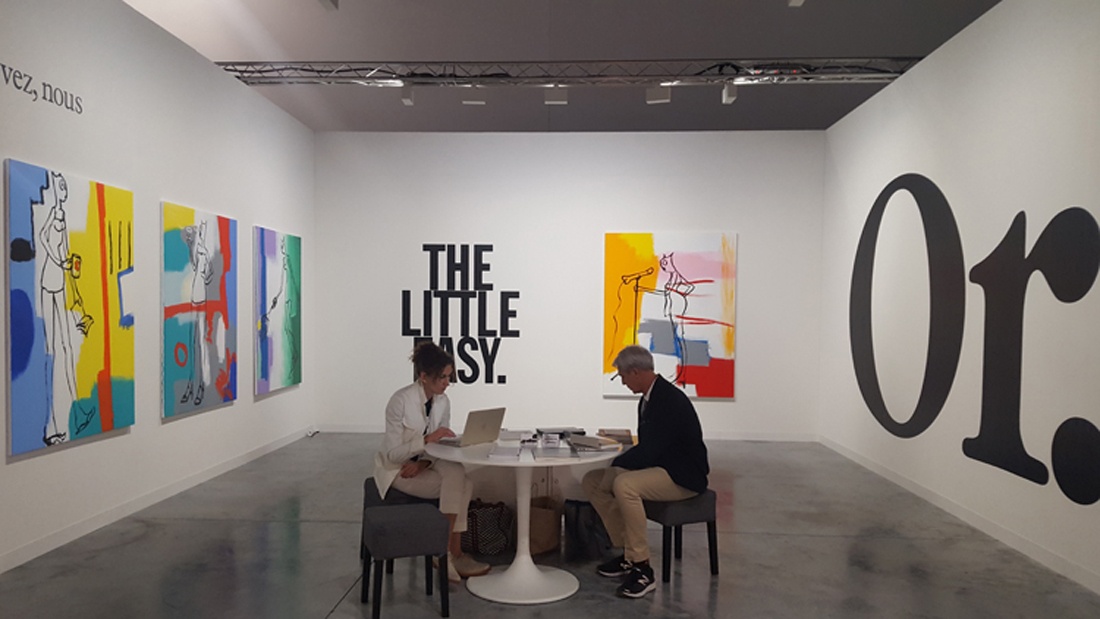
The exhibition booth of Galerie Laurent Godin.
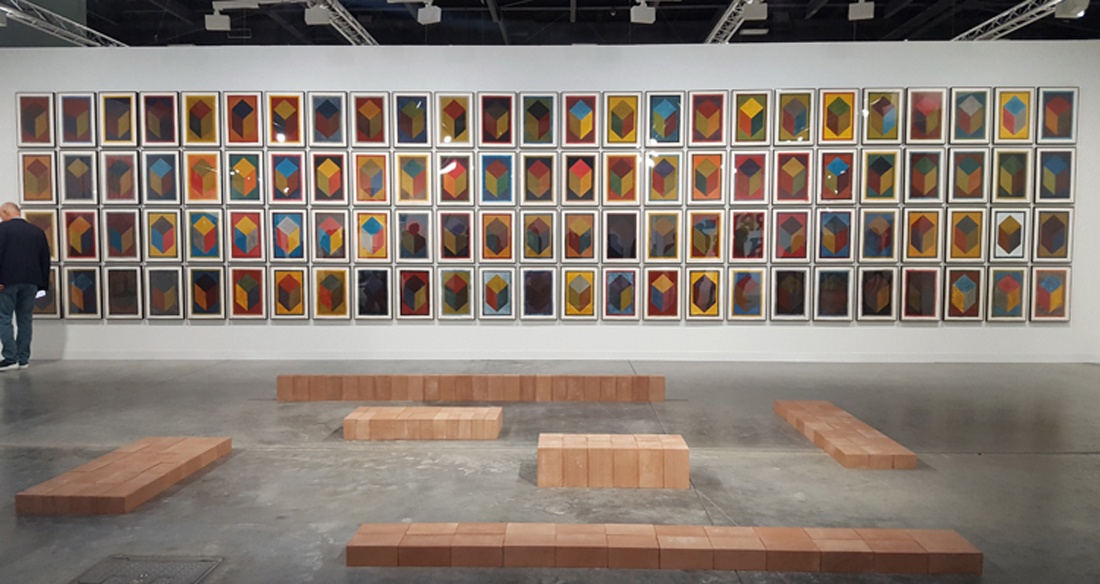
100 works by the artist Sol Lewitt, entitled 100 Cubes, 1991.
A note on the background:
A bit of an overview: the world’s leading art fair was founded in 1970 by three art dealers (Ernst Beyeler, Trudi Bruckner and Balz Hilt) in their native town of Basel, Switzerland. Art Basel invites the world’s leading galleries to showcase the most prominent works of contemporary art in order to facilitate their subsequent placement in private collections and art institutions. At present, Art Basel is staged three times annually: in Basel (Switzerland) in June, in Miami Beach (the USA) in December, and in Hong Kong (China) in March. Each of these three fairs showcases 3 billion US dollars worth of artworks.
The Miami Beach Convention Center
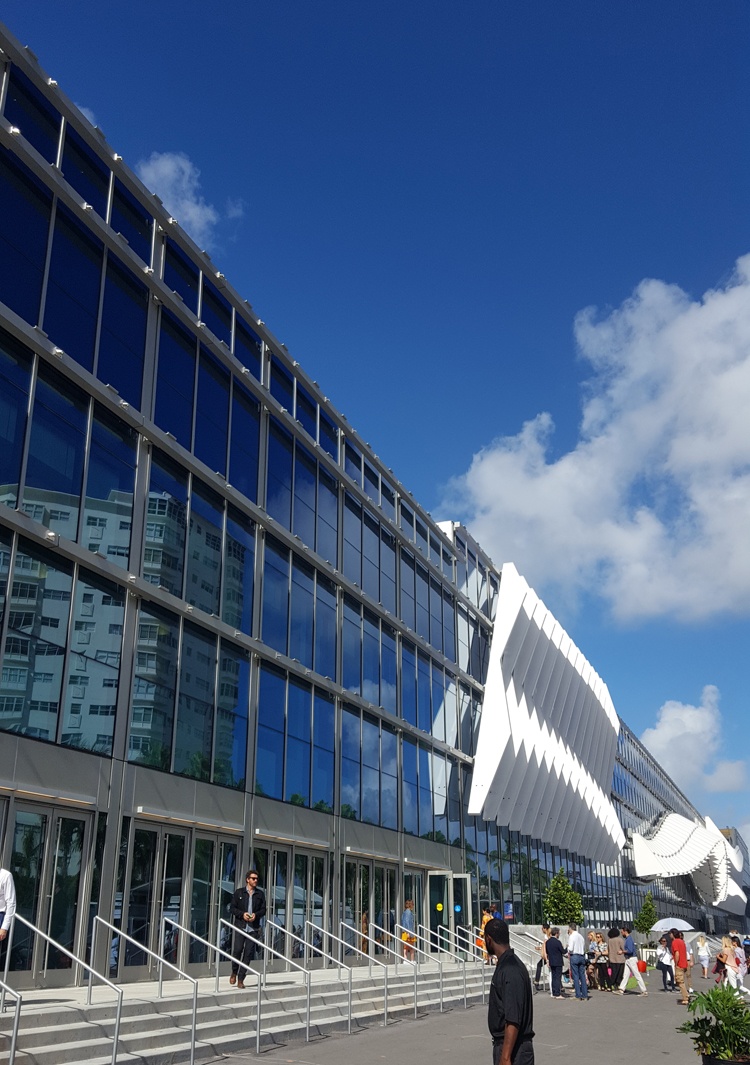
The Convention Center’s facade
The most recent Art Basel - Miami Beach saw more visitors than last year’s, despite the fact that it opened right as the Miami Beach Convention Center was undergoing radical renovations. Despite ongoing works, it is already clear that the convention center will offer even more venues after the renovations are completed: it is being expanded by several blocks that include new exhibition pavilions, recreation areas, as well as spaces for land art and large-scope outdoor installations. 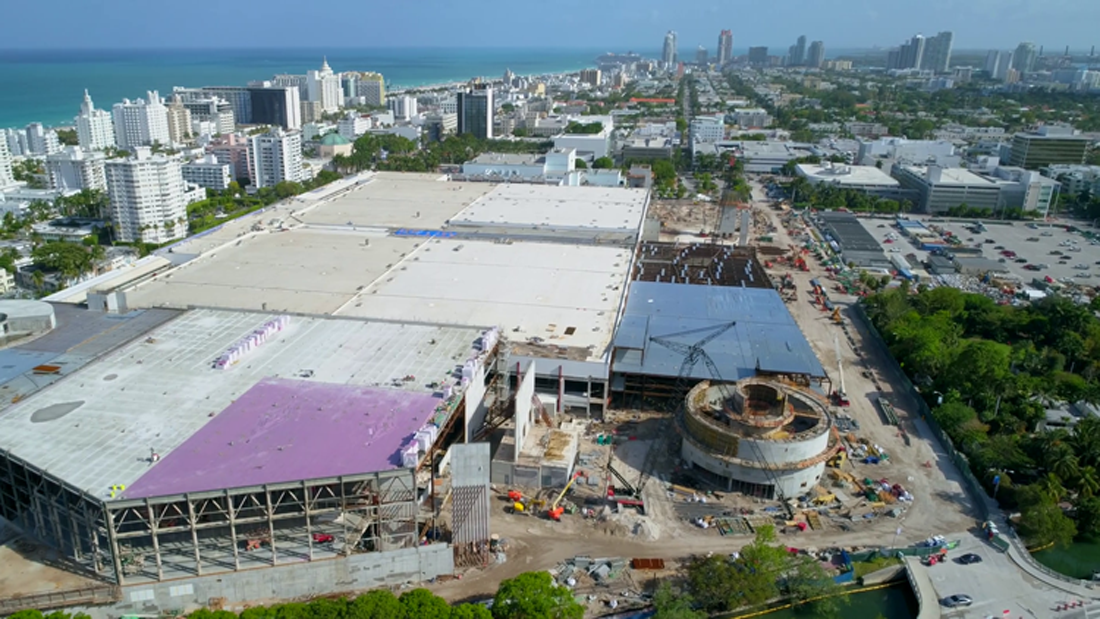
A birds eye view of the Miami Beach Convention Center expansion project.
Things of Note
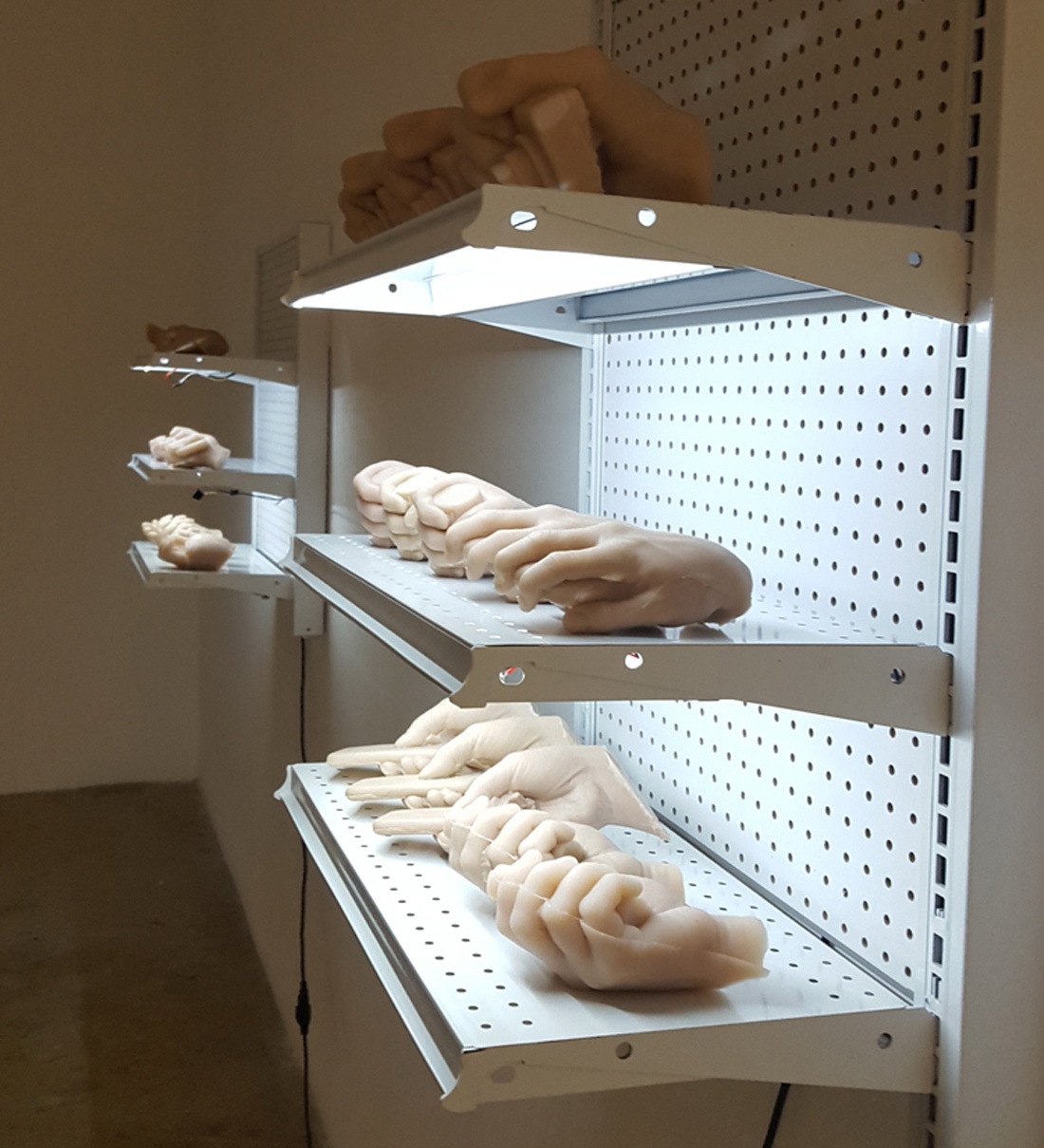
Creative Hands by Josh Kline (2011) at the parallel program, Rubell Family Collection.
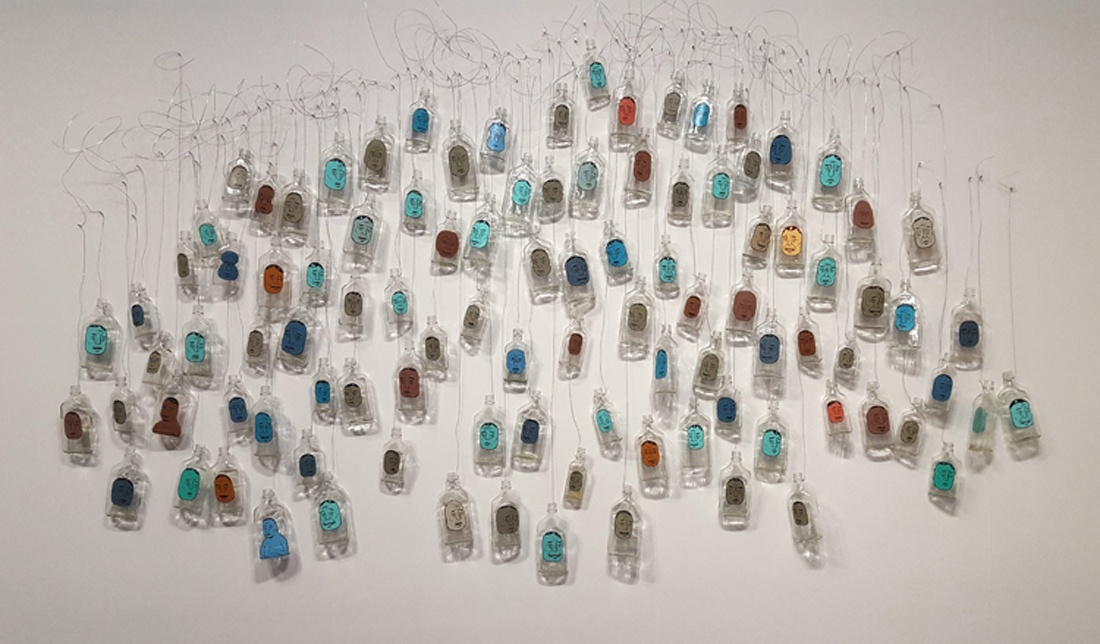
Barry McGee’s installation Untitled (2017) at the exposition of the San Francisco gallery Ratio 3. 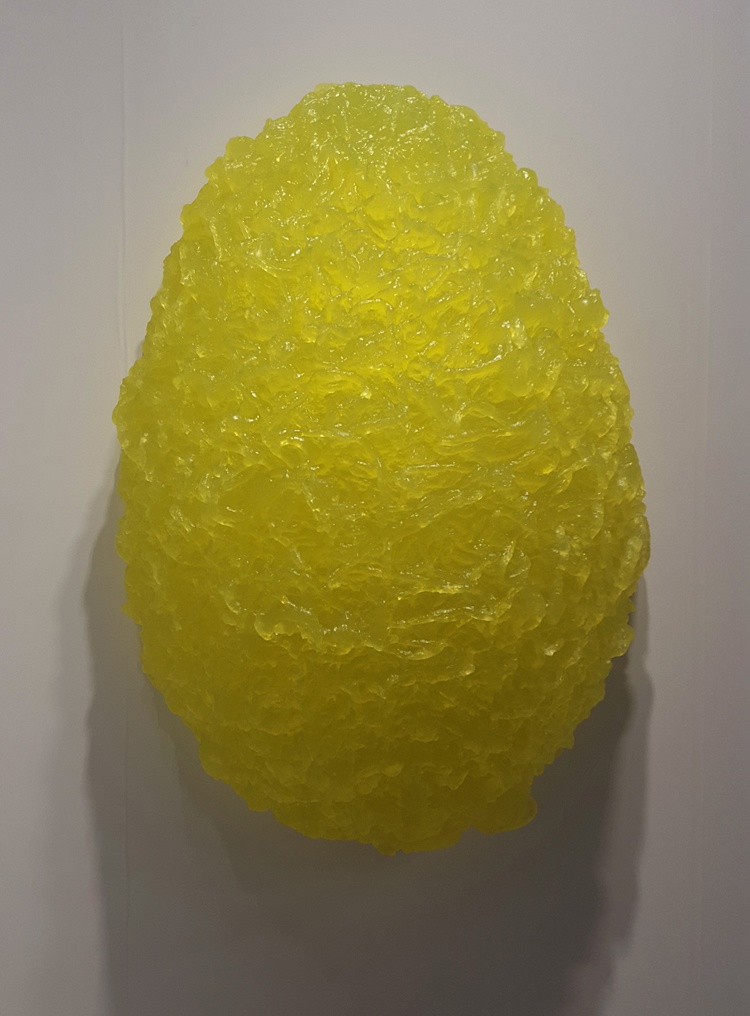
The sculpture THETIS by Lynda Benglis (2017) at the booth of the New York gallery Cheim & Read.
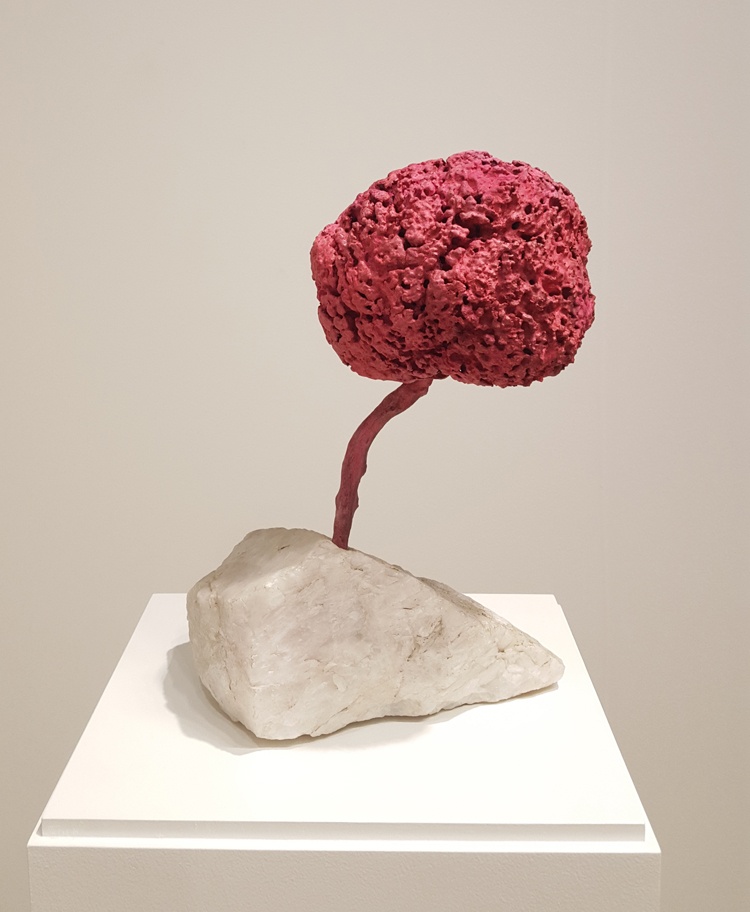
Untitled Pink Sponge Sculpture by Yves Klein (SE 204, 1959) at Lévy Gorvy’s booth.
It is becoming increasingly obvious that Art Basel is drifting ever further away from a typical sales-focused art fair. It is becoming a giant laboratory, with each booth presenting its unique research, which just might be the most noticeable trend of the show. Artworks are increasingly seen not as products for sale but as results or fruit of a search. Installations are often interactive: viewers are invited to become a part of the experience or to “play” and solve the artists' riddles.
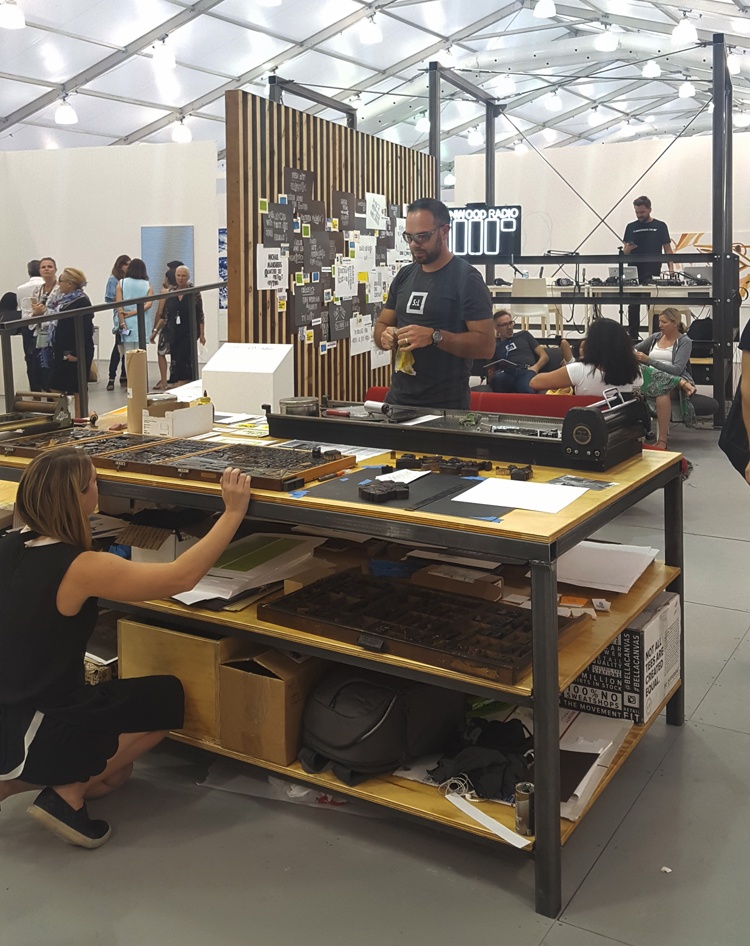
The UNTITLED exhibition (parallel program) gave the visitors an opportunity to see the Winwood Radio studio at work. 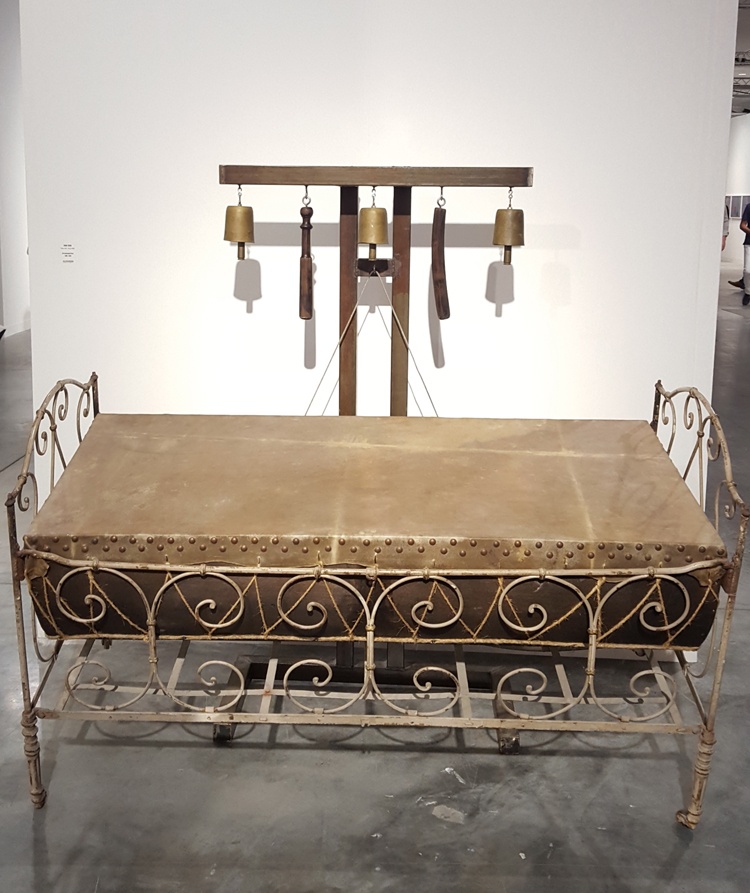
The installation Uninterrupted Voice by the Chinese artist Chen Zhen (1998-1999).
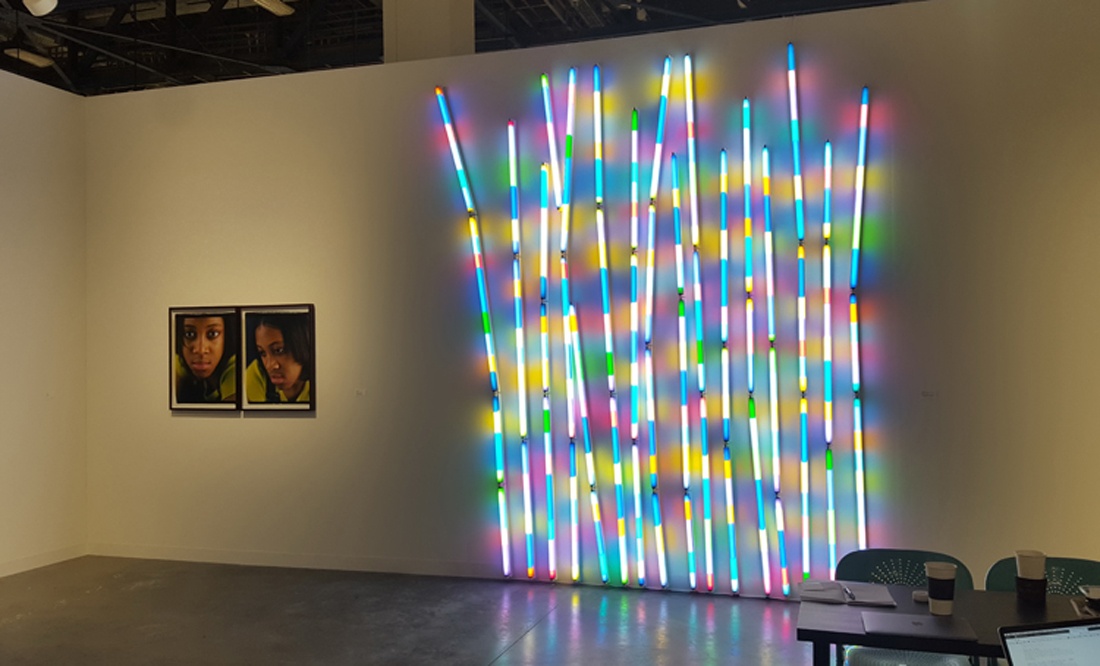
The installation Bamboo Grove (Arashiyama, Afternoon Effect, May 23, 2017) by Spencer Finch.
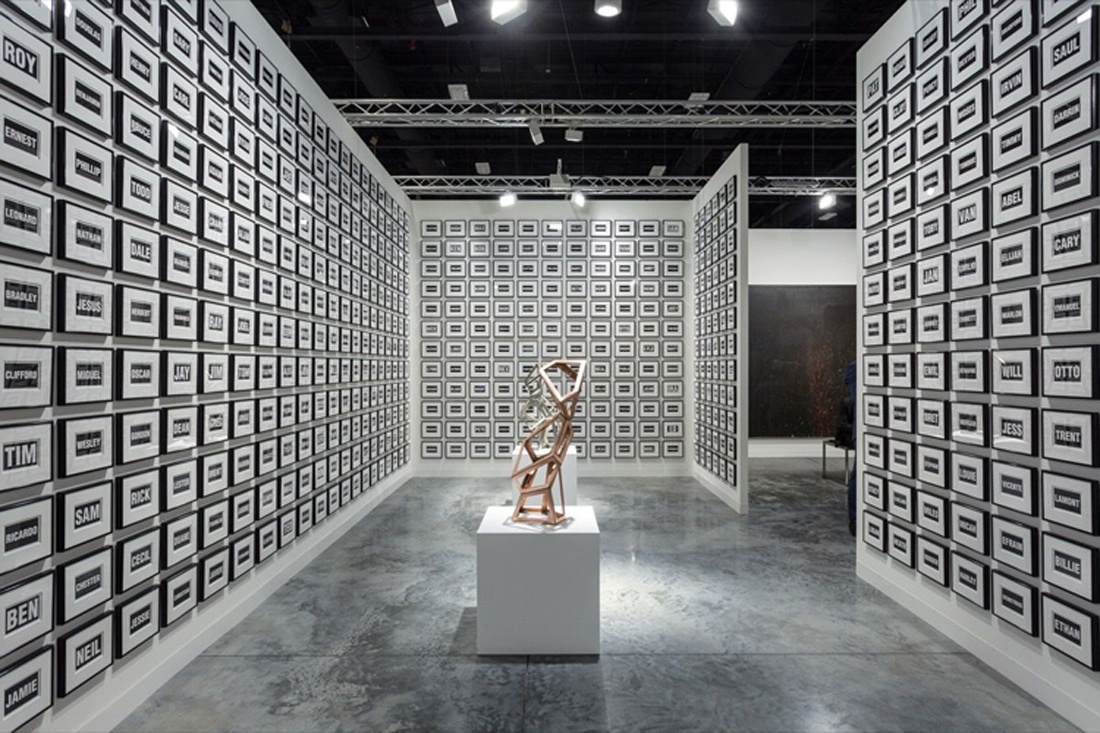
Galerie Thomas Schulte: Each and Every One of Youby Allan McCollum (2004, installation), comprised of 1,200 black and white tags with the most popular male and female names in the USA in the 2000s.
We are also growing progressively more accustomed to the fact that art is interacting with science and cutting-edge technologies ever more frequently. For example, ever more expositions feature robots. It is no surprise that visitors throng to these booths: everyone is curious about the machines’ workings, and how close to humans they could become. One’s own reaction to these works is well worth analyzing, for AIs are a fascinating and awe-inspiring subject. 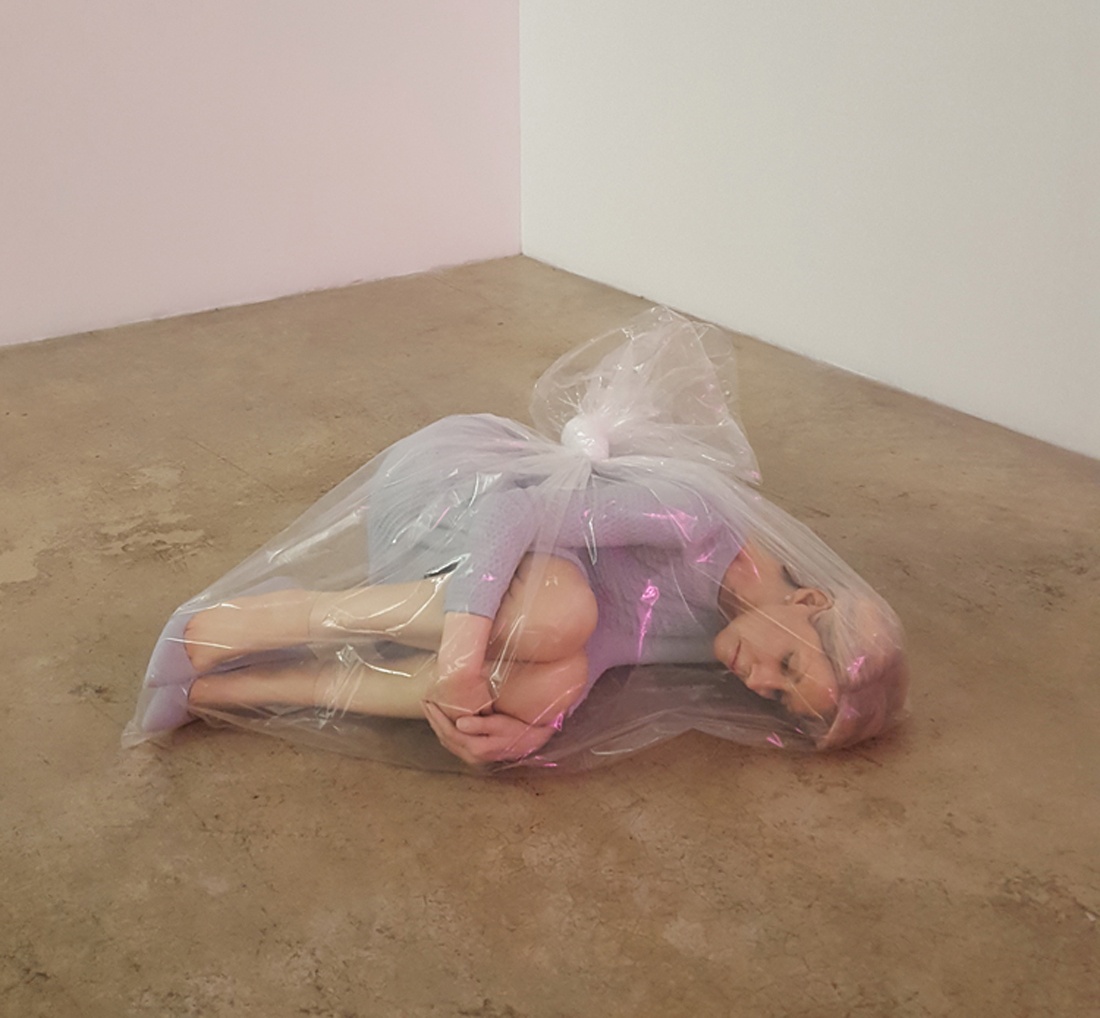
Each year, ever more sculptures are produced by 3D printing. Josh Kline’s Thank You for Your Years of Service (Joann/Lawyer)(2016), parallel program, Rubell Family Collection.
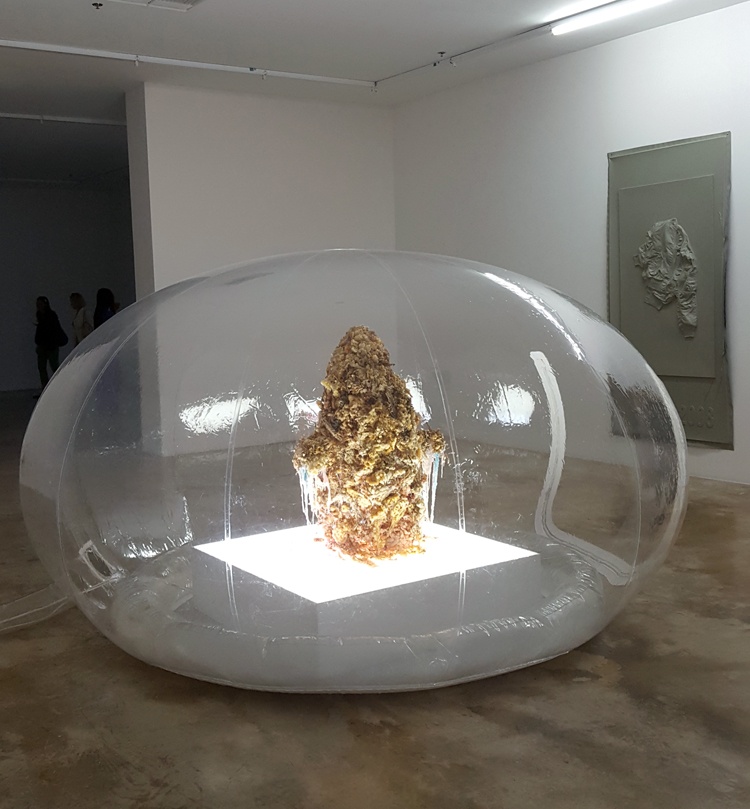
ALZ/AZN by the Korean artist Anicka Yi (2015, installation), presented at the parallel program by Rubell Family Collection.
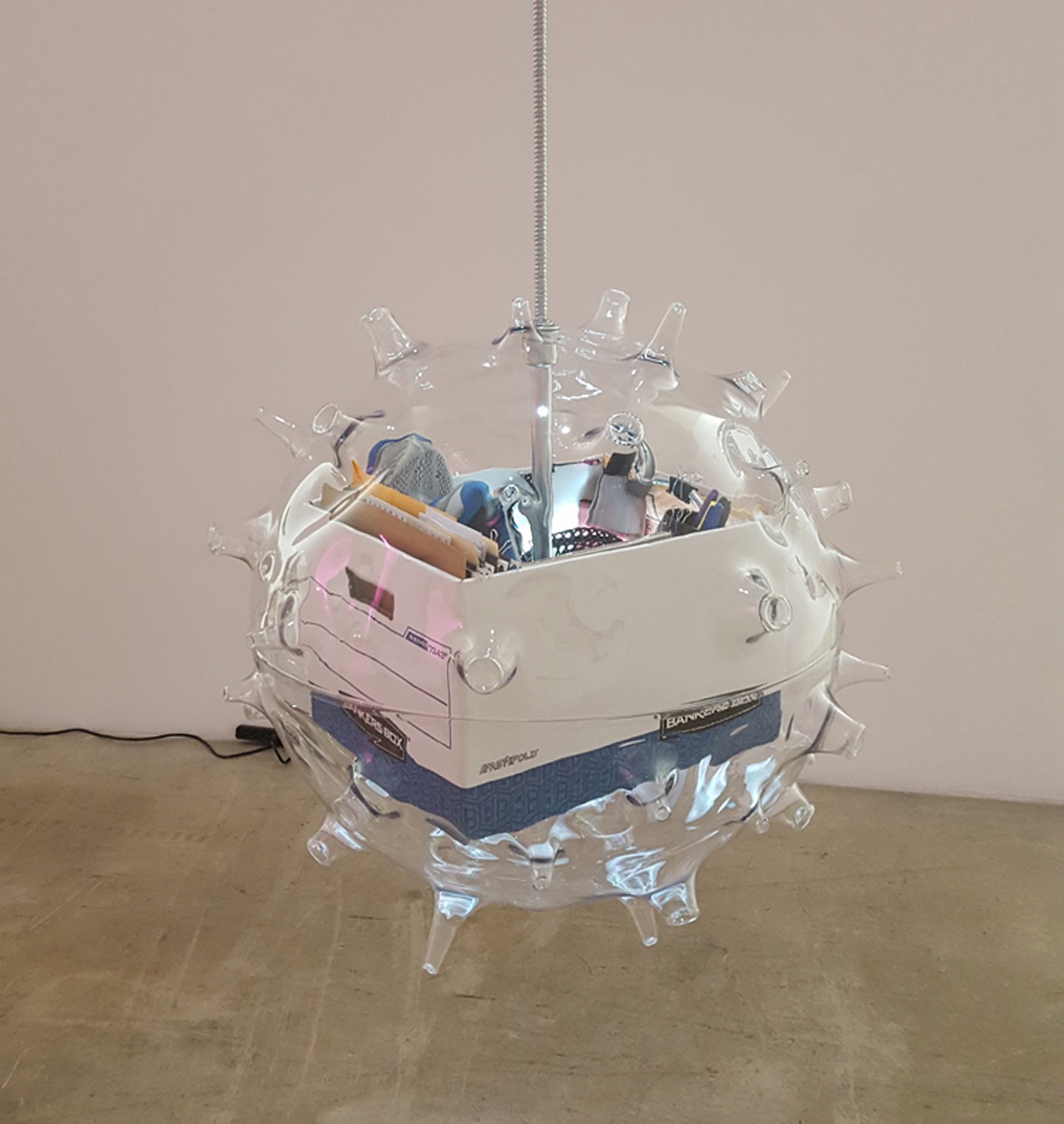
Contagious Unemployment (All The Best) by Josh Kline (2016), presented at the parallel program by Rubell Family Collection.
Another prominent feature is the works’ scope. Artists create monumental works that require more room to be exhibited properly. It is no coincidence that the far-sighted management of the Miami Beach Convention Center, Art Basel’s long-time host, invested substantial funds in the expansion of exhibition pavilions.
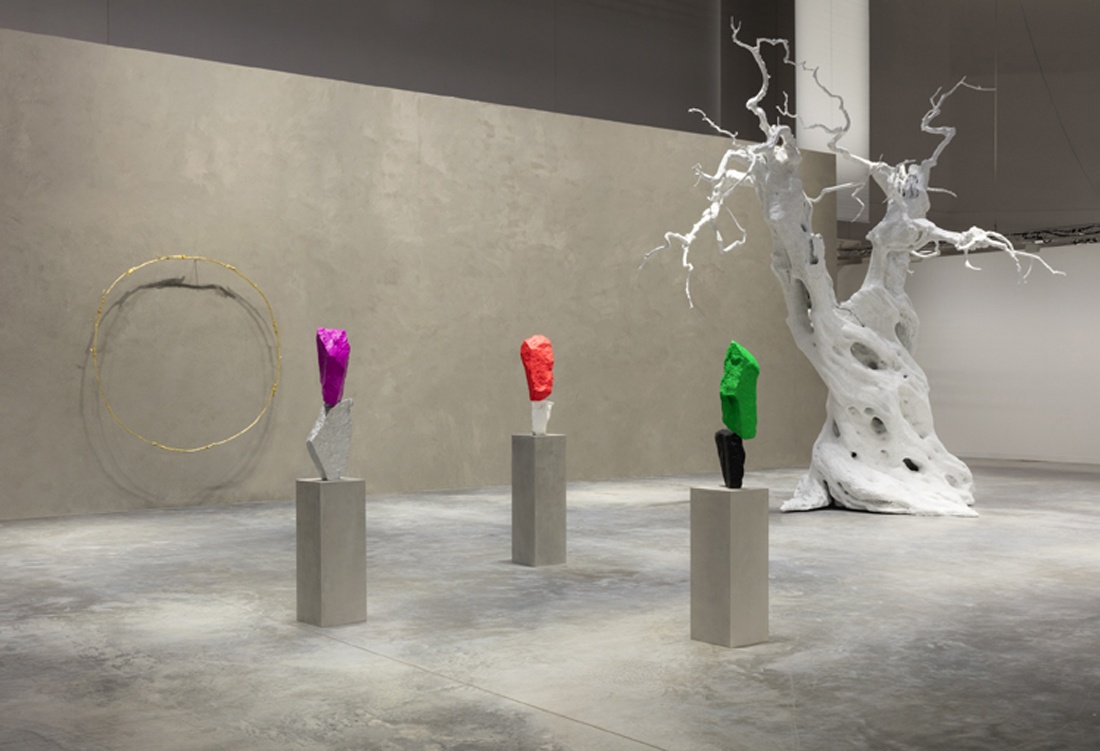
Eva Presenhuber’s booth, installation by the artist Ugo Rondinone.
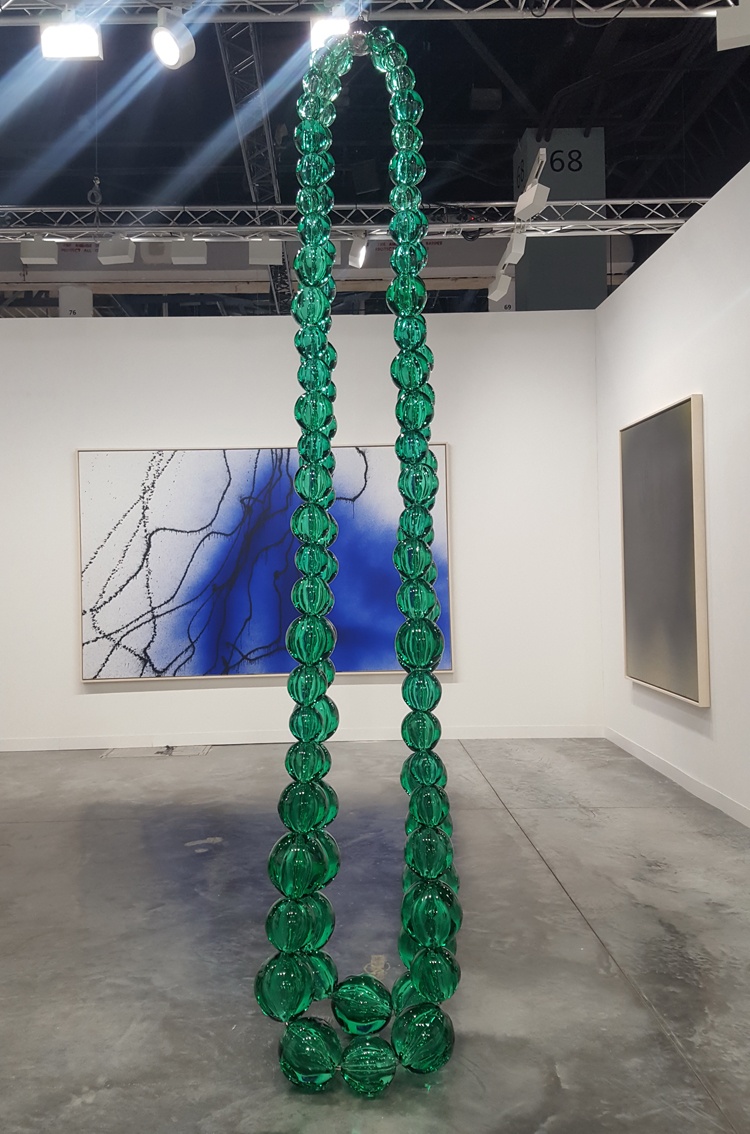
Jean-Michel Othoniel’s sculpture Double Collier Emeraude (2013), the Perrotin exposition.
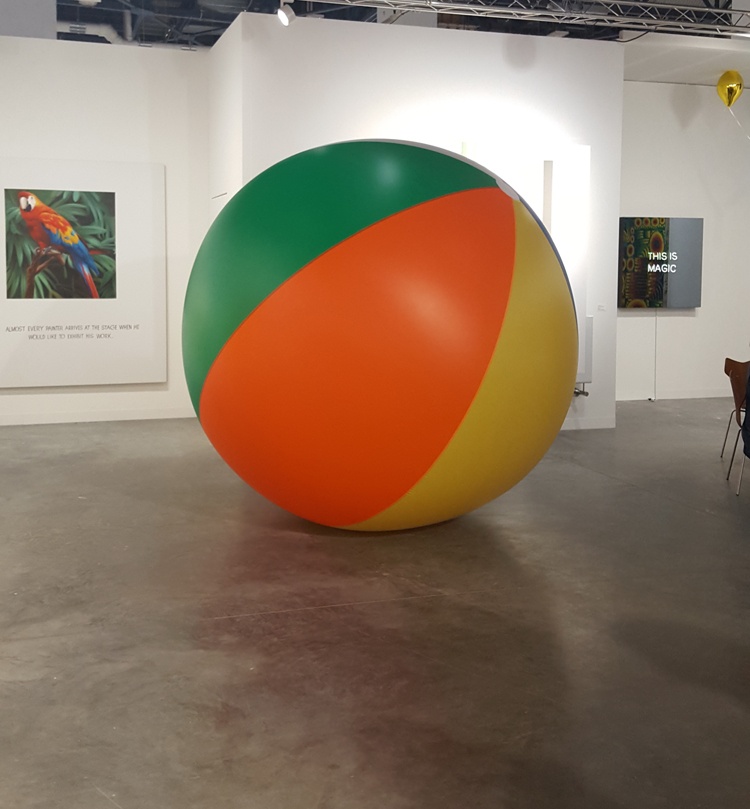
The Secret Agent by Peter Land(2017) at the Galleri Nicolai Wallner.
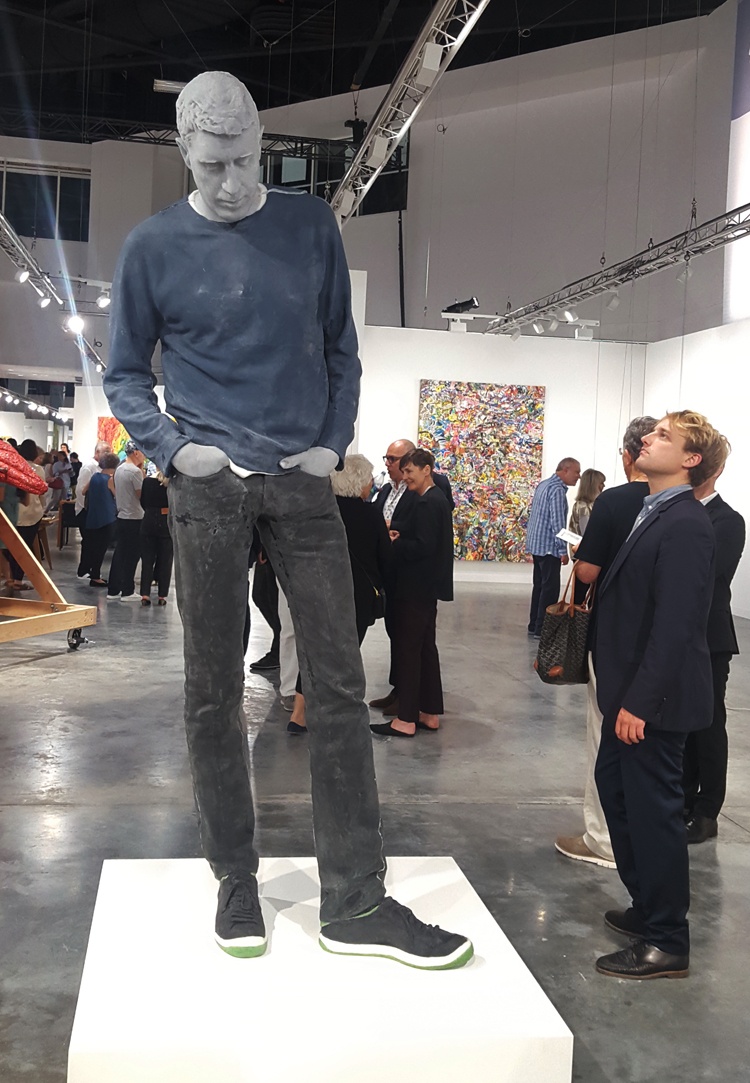
Adam by Urs Fischer (2014-2017)at the Sadie Coles HQ’s booth.
Therefore, everything is arranged to make the viewer lose sense of reality. Moving from one booth to the next, visitors plunge into new worlds and feel the breath of the future.
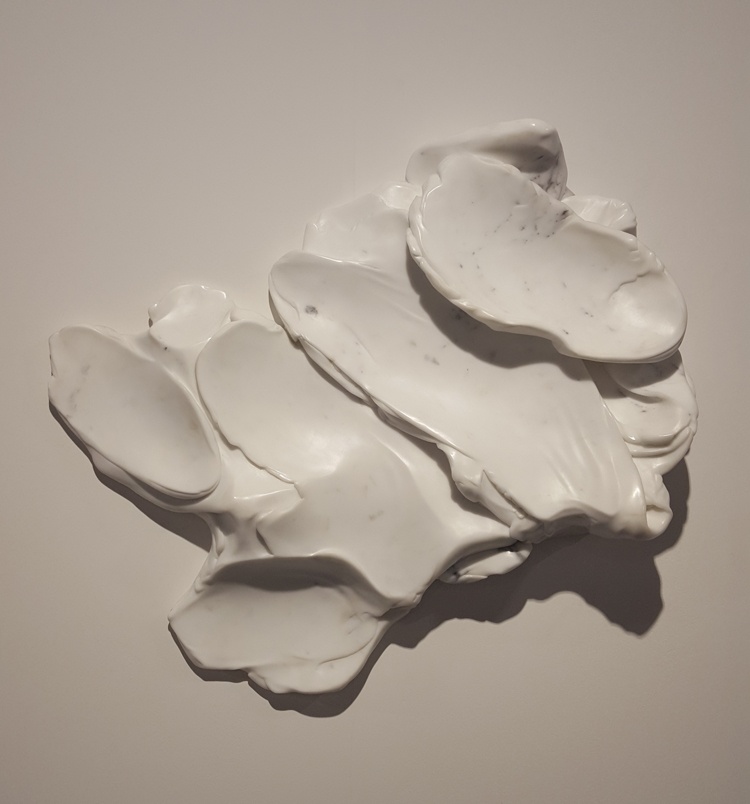
The bas-relief Fingertips III by Loris Cecchini (2017, Carrara marble), at the Galleria Continua’s booth.
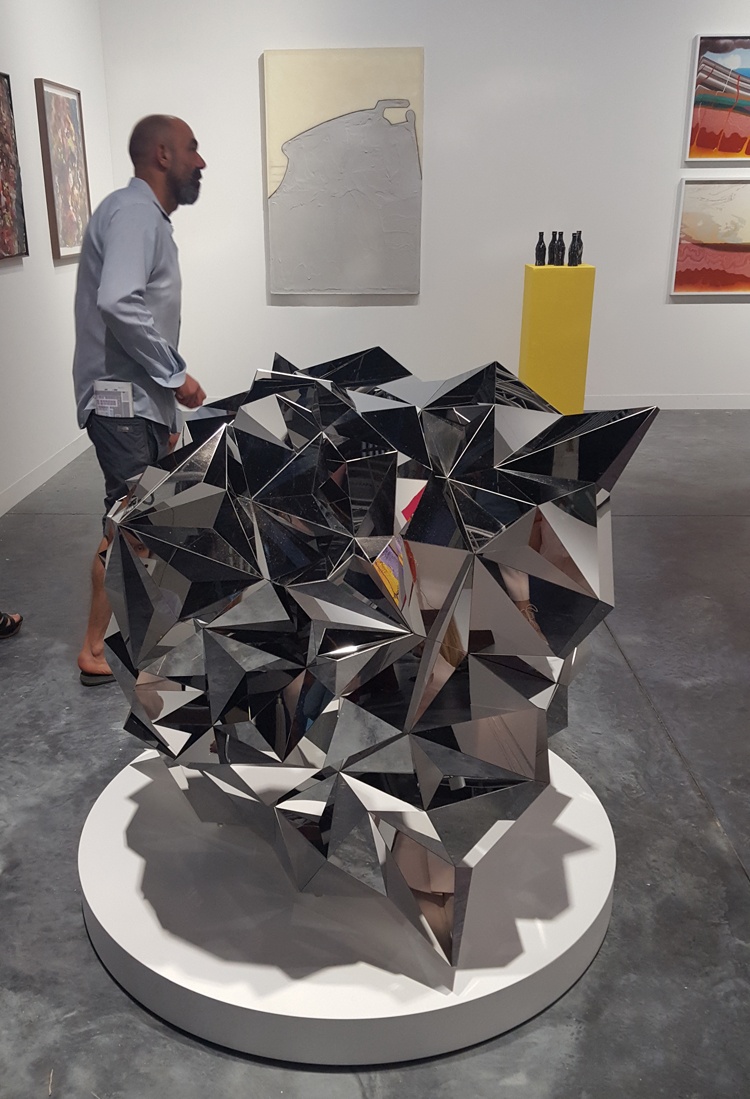
The sculpture Parsec #6 by Timo Nasseri (2017), at the Sfeir-Semler Gallery.
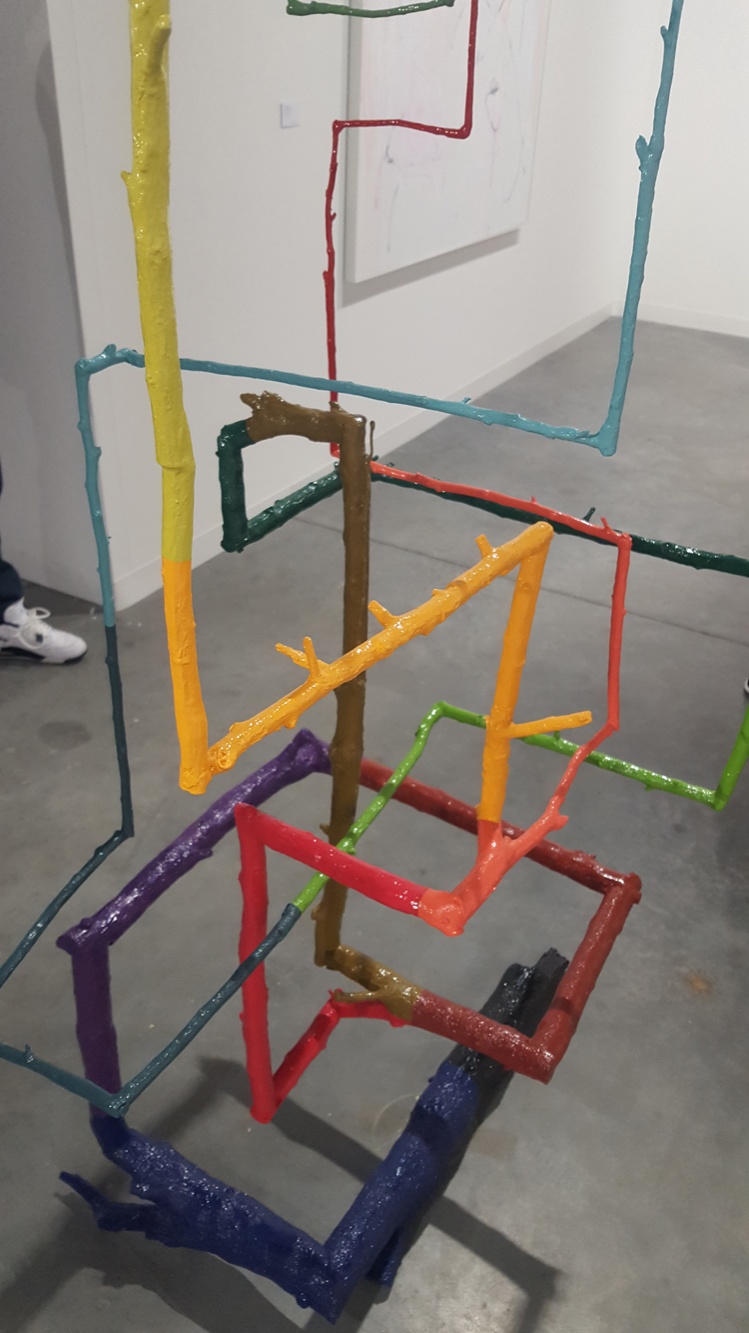
Three Trees by Evan Holloway (2017, a fragment), at the Xavier Hufkens’ booth.
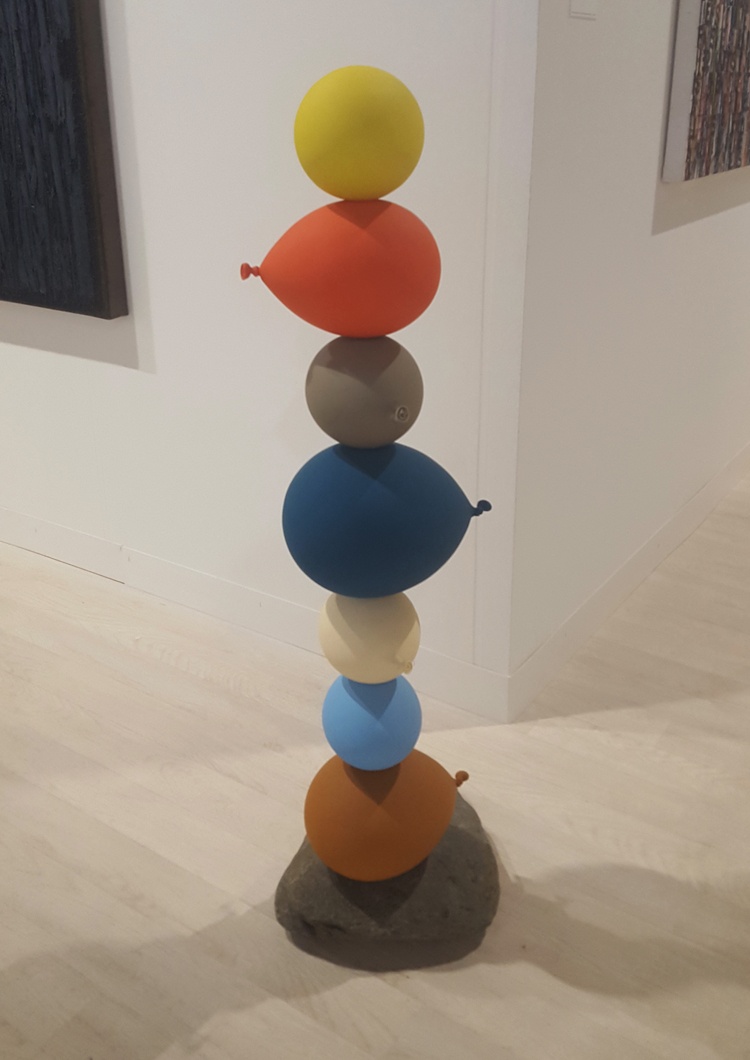
Untitled (Short People) by GIMHONGSOK (2017), at the Kukje Gallery/Tina Kim Gallery booth.
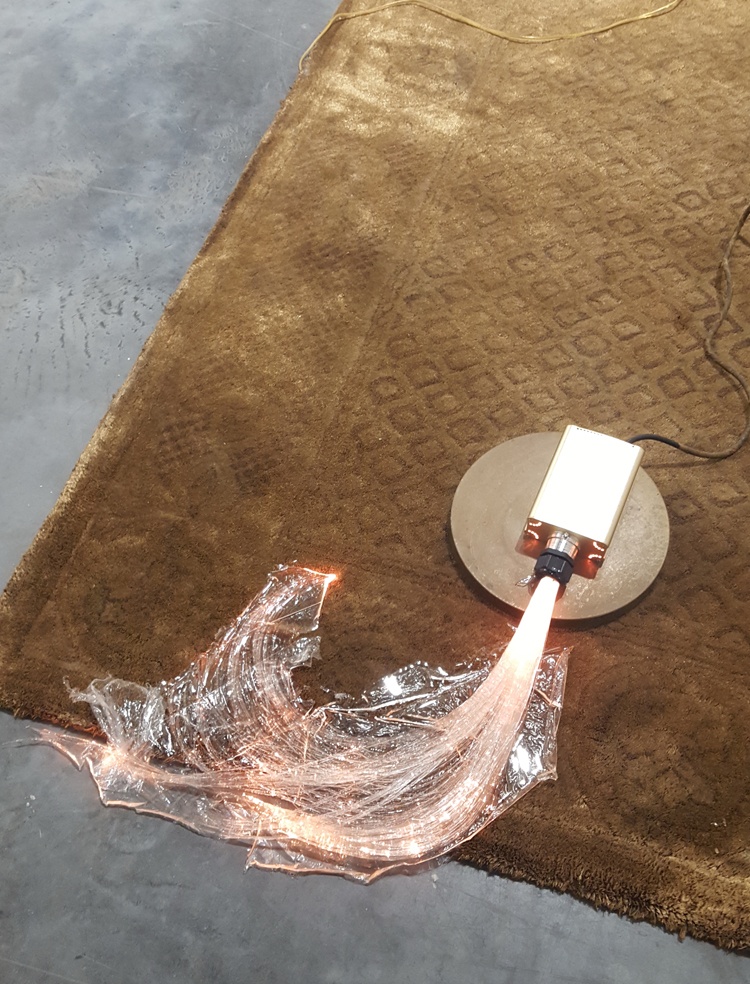
Intralocutor, "Are you on or off?", by Rochelle Goldberg (2017, an installation fragment),at the Miguel Abreu Gallery booth.
Art collecting has become a global playground, with not a week passing without a major art fair happening somewhere in the world. Aside from Art Basel, major players include Frieze (London, New York), Art Cologne (Cologne), FIAC (Paris), Arco Madrid (Madrid), Armory Show (New York), and Art Dubai (Dubai). The information revolution, ushered in by the Internet, has made global information exchange possible. It allows collectors to do their own research and buy up art from all around the world. Therefore, the collectors’ global approach is a characteristic trait of the contemporary art market. Formerly focusing on artists from their region or country, buyers now engage in active international exchange.
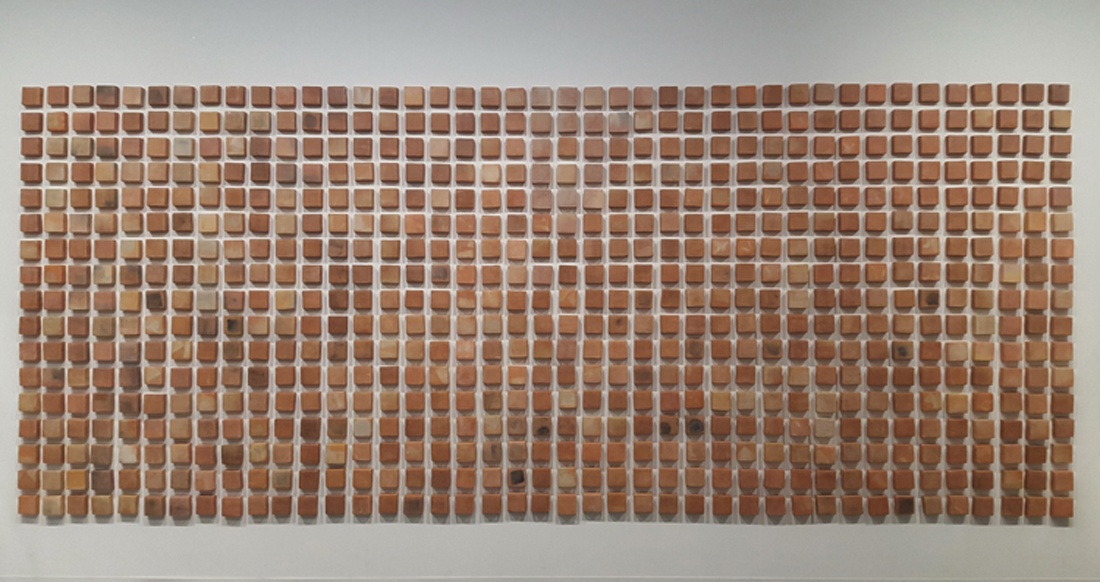
La Gran America by Teresa Margolles (2017).
Another typical feature of the times lies in the fact that artists diversify their practices, seldom confining themselves to a single medium. Over the eras, most artists, unless we count the titans of the Renaissance, could be easily classified as either sculptors, painters or graphic artists. These days however most artists function as painters, writers, designers, photographers, DJs, founders of public initiatives and even scientists at the same time.
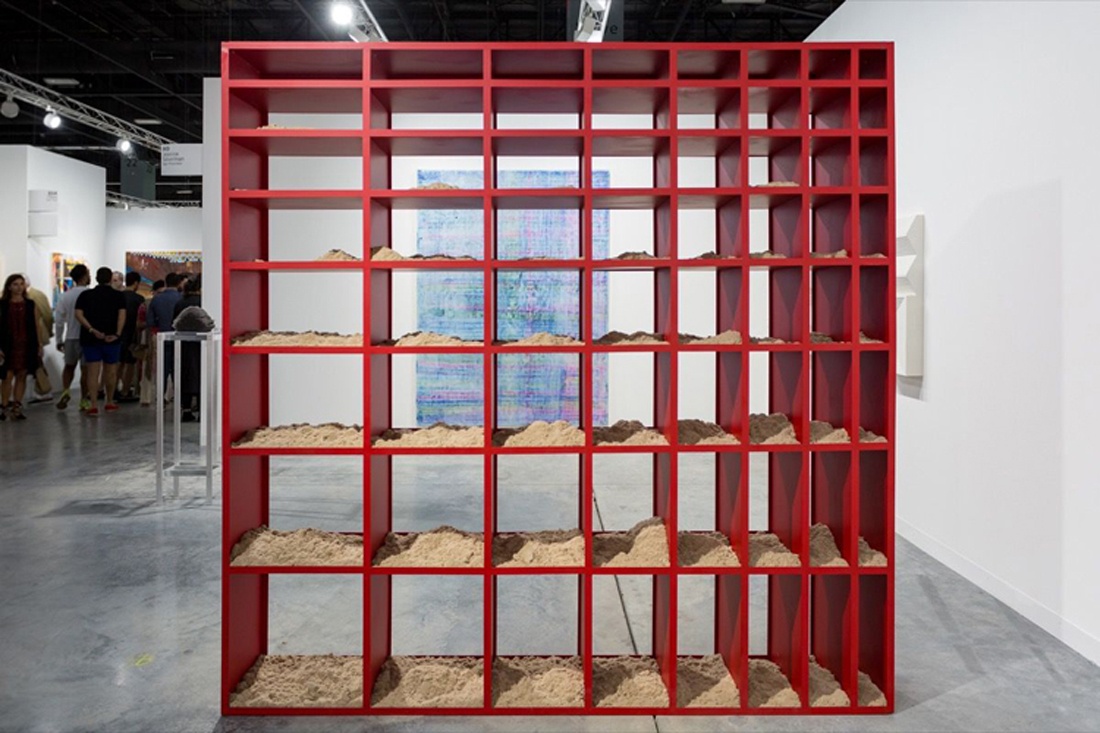
An installation at the Jessica Silverman Gallerybooth.Photo by Alain Almiñana for Artsy.
Notably, the Art Basel team wants each exhibition to have a distinct identity informed by its regional specificity. This makes sense, given that a large portion of the participating galleries is based in the country hosting the show. A good half of the represented galleries are local (Chinese in Hong Kong, USian in Miami, and Swiss, German, Italian or French in Basel). It should also be noted that the art week gives the viewers an opportunity to see a number of private collections, including a lunche on with the Rubell Family Collection.
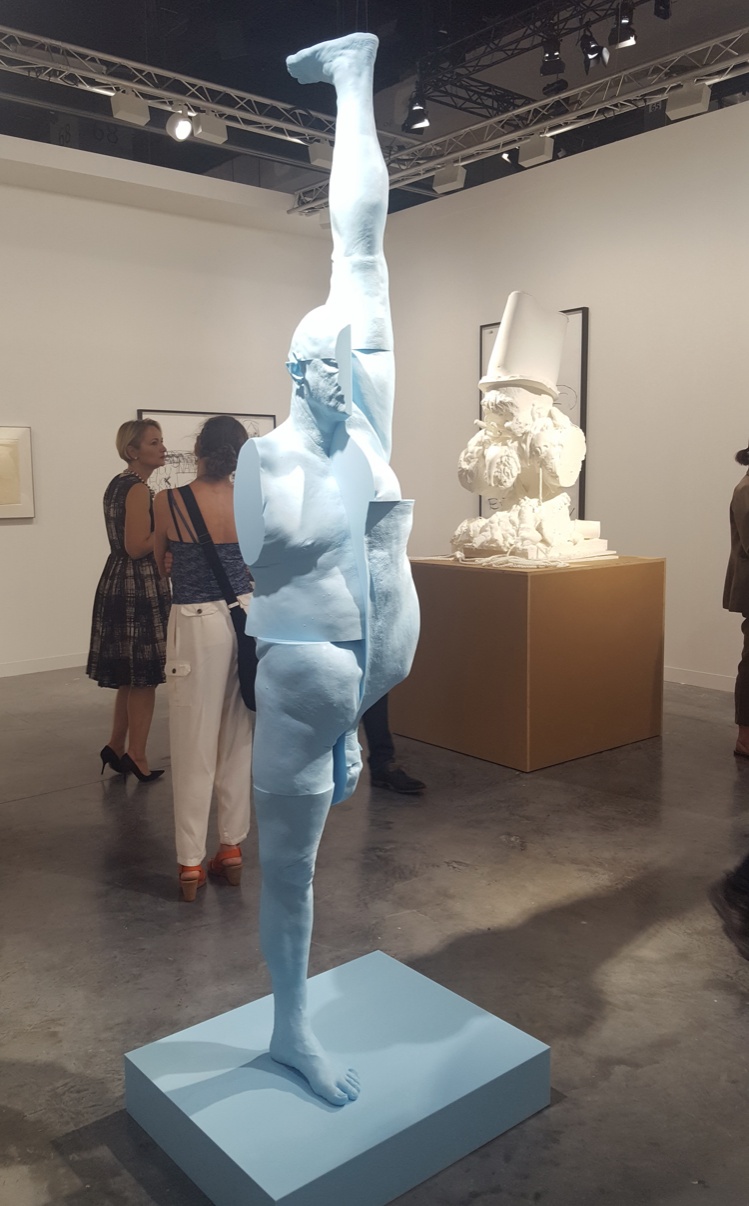
Paul McCarthy’s sculpture at the Hauser & Wirth Gallery.
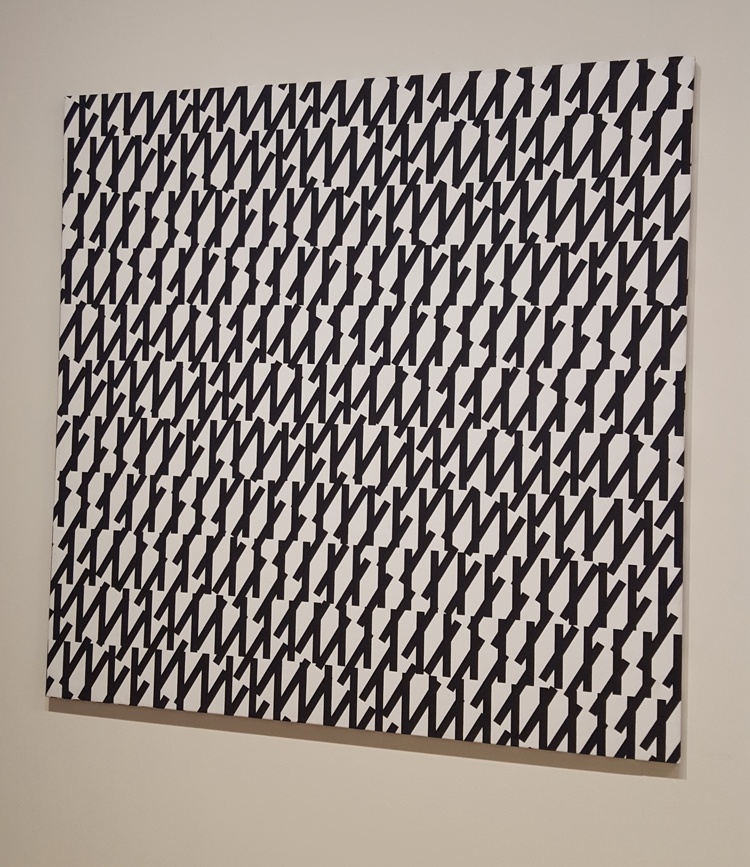
2 trames de tirets 0° 30° (13cm de haut chacun) by François Morellet (1971) at Lévy Gorvy’s exposition.
The Audience 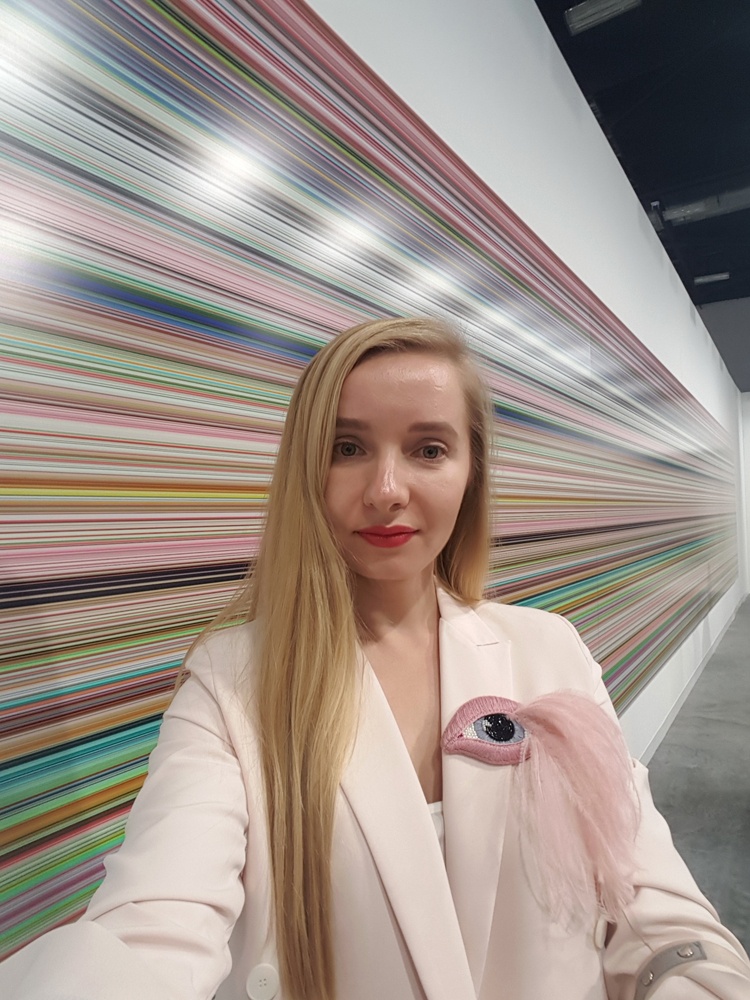
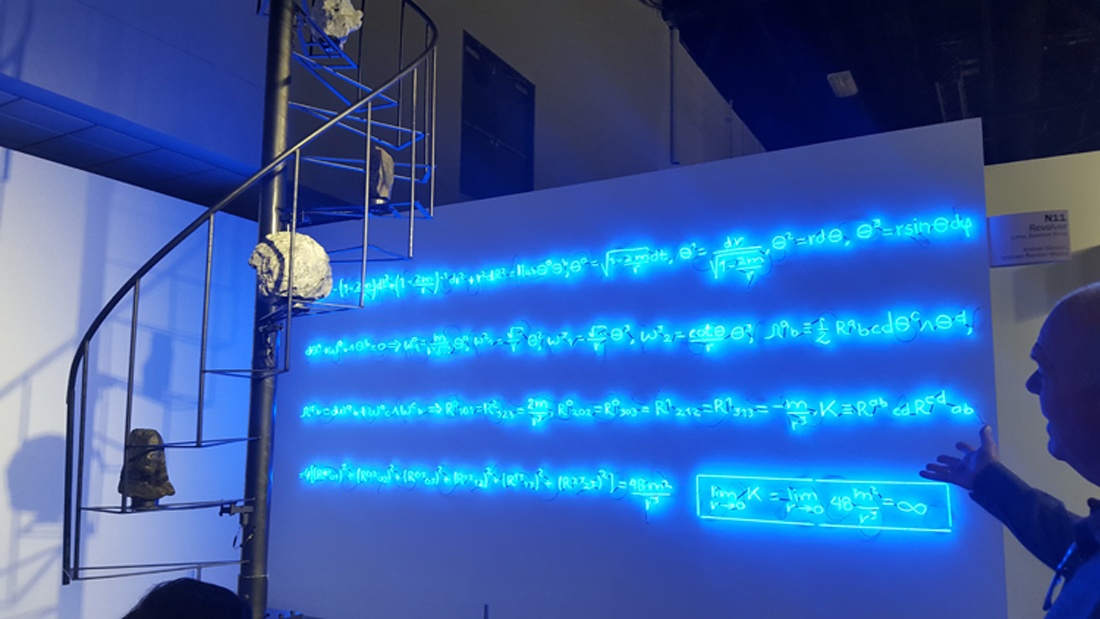
Study on a Rotating Black Hole by Andrea Galvani (2016) at the Revolver Galería’s booth.
With the spread of the international art fair phenomenon, even such heavyweights as Art Basel have to work hard not to lose their station, prompting them to enhance the visitor experience. Many flock to the fair, and not exclusively to buy art. Curators fly in to find galleries for further cooperation, or to discover artists they could invite to biennales or other shows. For museum directors, Art Basel creates opportunities to meet new patrons for their institutions. The fair is also a magnet for actors, musicians, fashion designers, architects and interior decorators who come to buy or admire art. This year, the visitor list included actors Leonardo DiCaprio, Val Kilmer, Jaime Kingand Owen Wilson, the singer Ricky Martin, the film director and producer Michael Bay, the British artist Tracey Emin, the American fashion designer Jeremy Scott, the famous publisher and entrepreneur Jason Binn, and the Dominican baseball player Sammy Sosa. The supermodel Cindy Crawford with husband Rande Gerber and son Presley Gerber, Paris Hilton with her fiancé Chris Zylka, the Puerto Rican top model Joan Smalls and the Czech super model Karolina Kurkova also made an appearance.
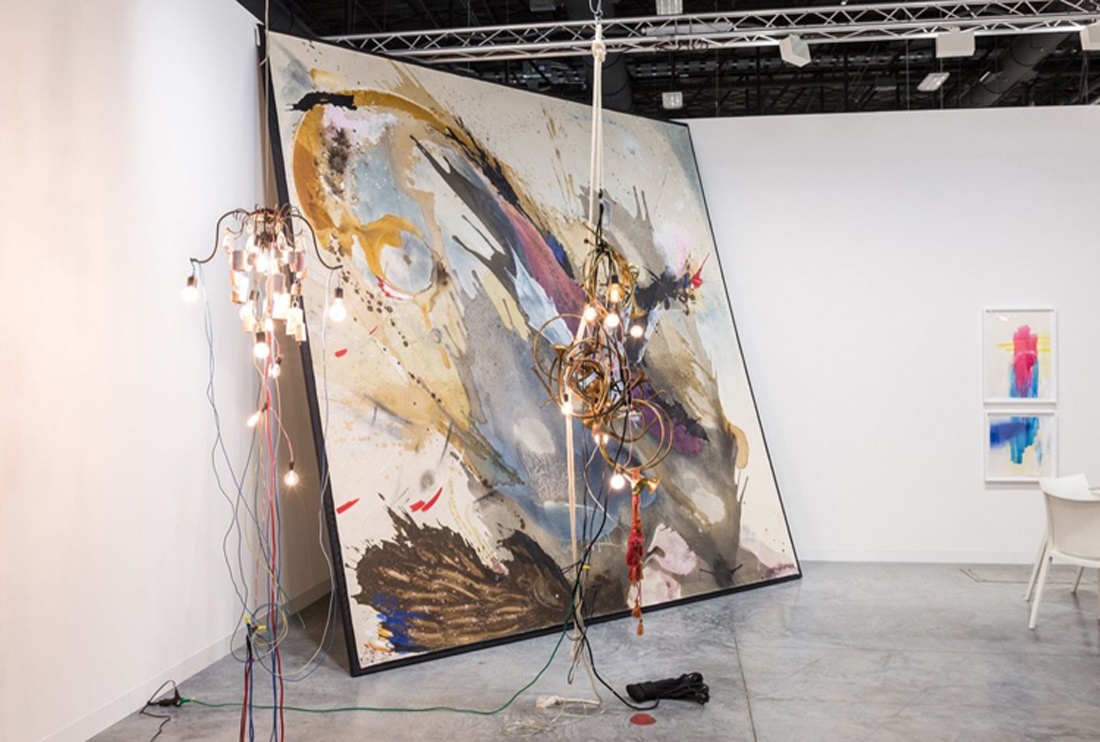
Paintings and installations at the David Lewisbooth. Photo by Alain Almiñana for Artsy.
To an average visitor, an art fair offers a quick guide to the global art processes and trends. Art Basel is also a good litmus test for the contemporary global art climate: to offer an example from the previous year, Donald Trump’s election as the US president made Sam Duran’s politically charged End White Supremacy (Blum & Poe Gallery) and The Tyranny of Common Sense Has Reached Its Final Stage by Rirkrit Tiravanija (Gavin Brown’s Enterprise) the show’s smash hits.
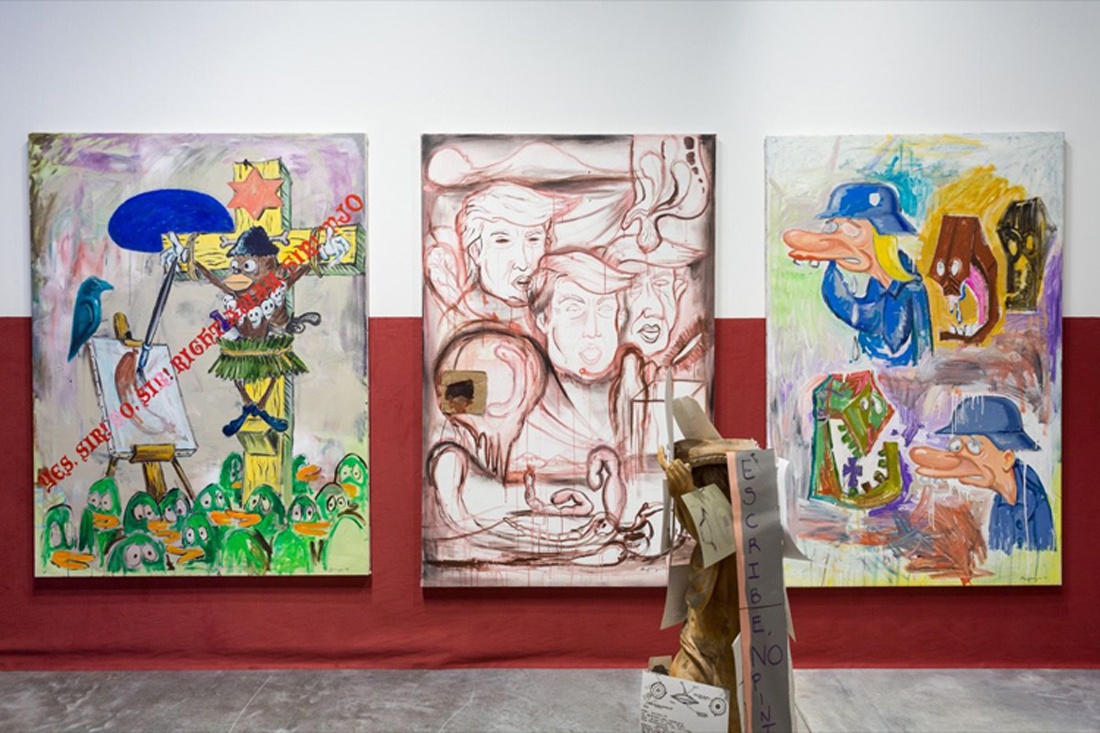
The Tyler Rollins Fine Art Gallery. Photo by Alain Almiñana for Artsy.
Marc Spiegler, the Art Basel Global Director, notes that the fair is a challenge to all those who state that they don’t like art: “Come to the show and spend some time and really not discover something that doesn't excite them. I really do think for the people who put the time in, they will always discover new things, new artists, new movements.”
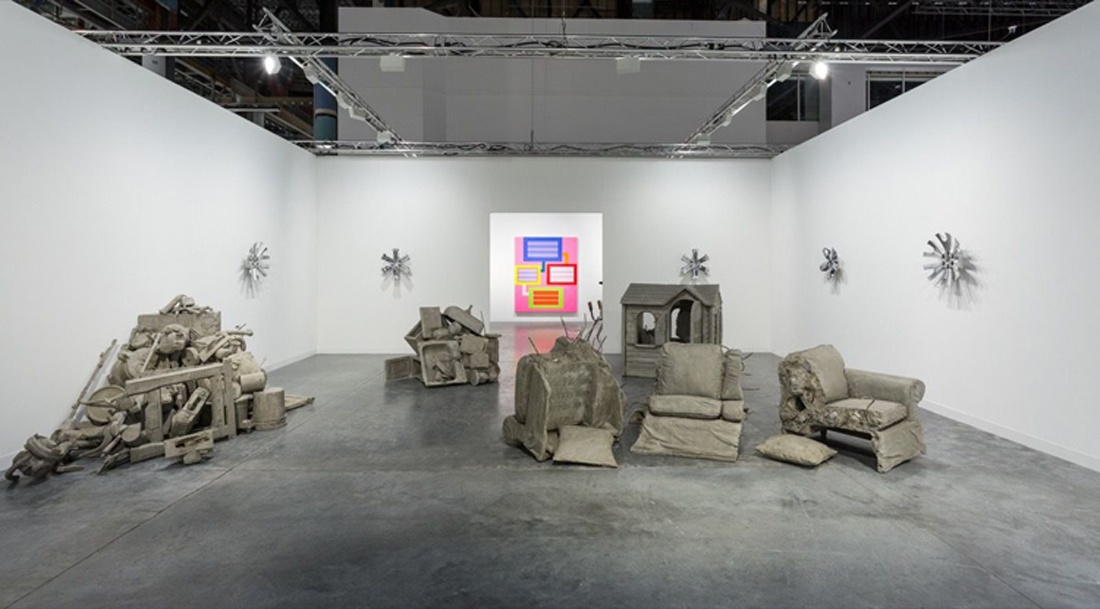
Stuart Shave/Modern Art Gallery booth. Photo: Alain Almiñana for Artsy.
Regarding Sales
Summing up the results of the art week, the owners of the leading galleries worldwide noted that this year was more successful than the last.
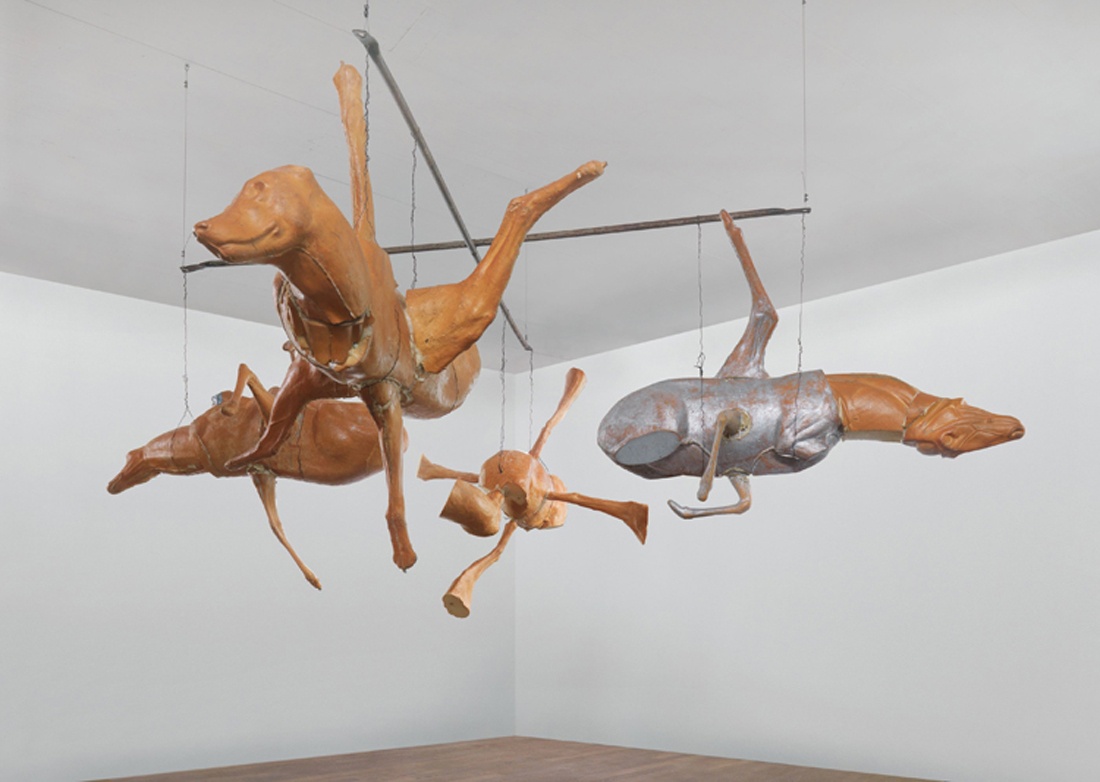
The installation Untitled (Two Wolves, Two Deer) by Bruce Nauman (1989), sold for $ 9.5 million to an Asian collector by the Hauser & Wirth Gallery in the show’s early days.
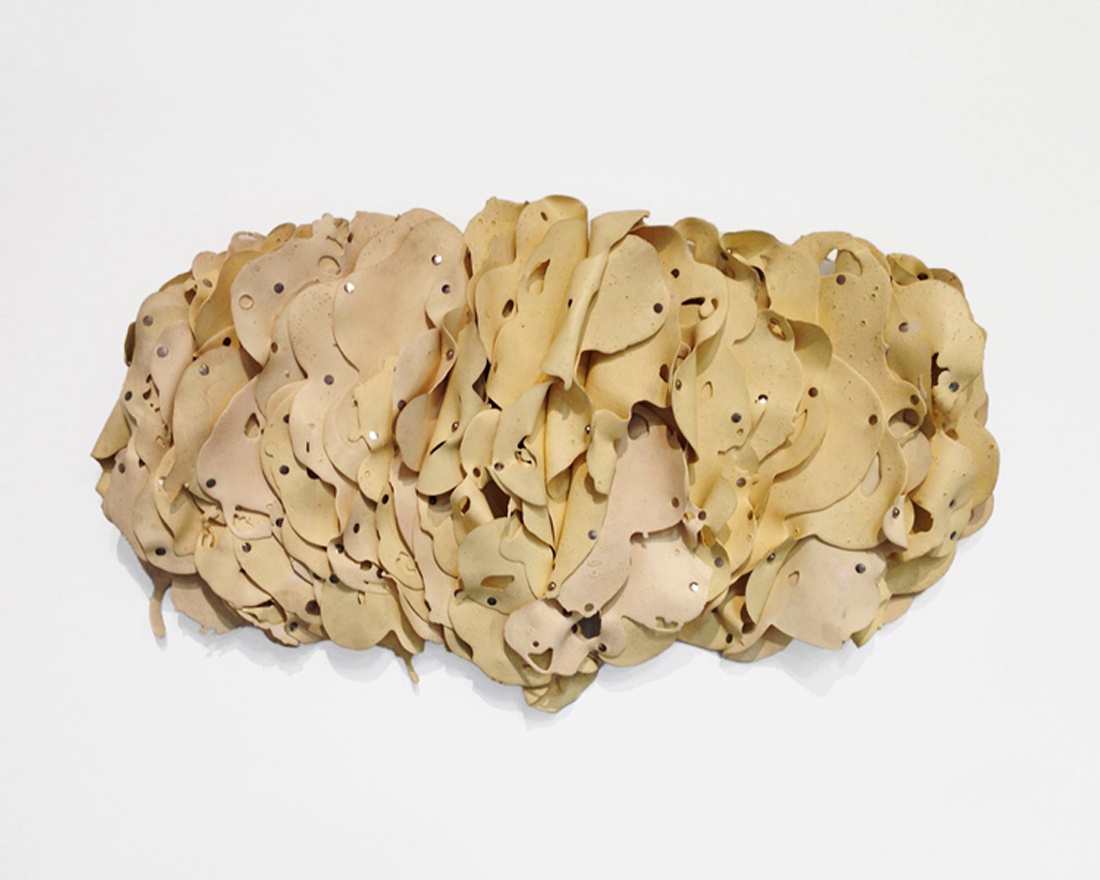
Alison Jacques Gallery sold Hannah Wilke’s sculpture Mellow Yellow (1975, latex, snaps) for $750,000.
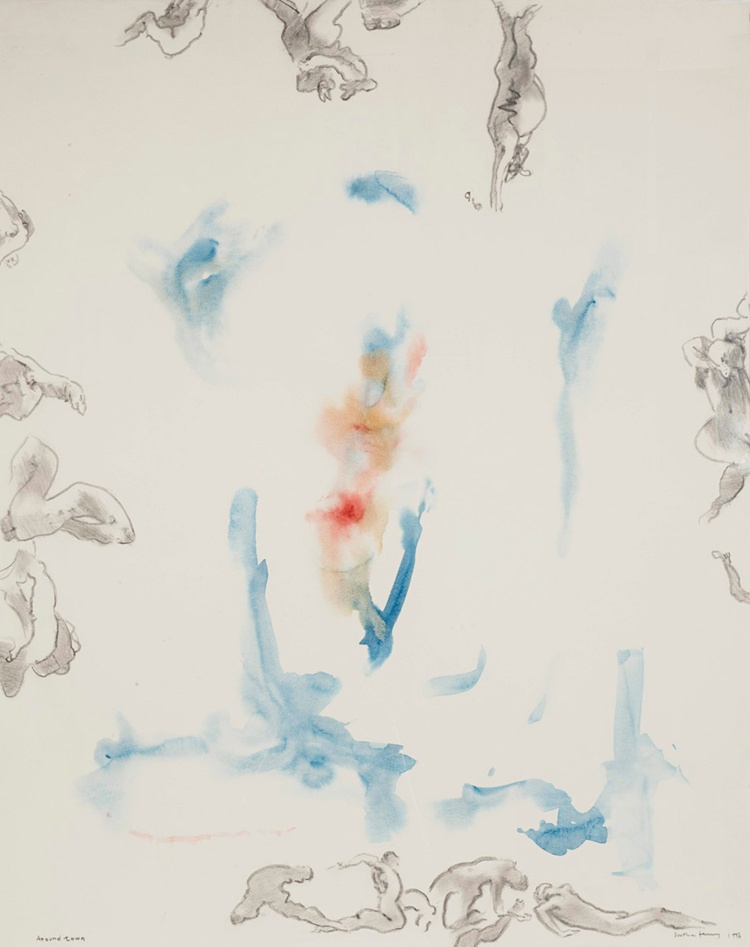
Alison Jacques Gallery also sold Dorothea Tanning’s watercolor Around Town (1986) for $5,000.
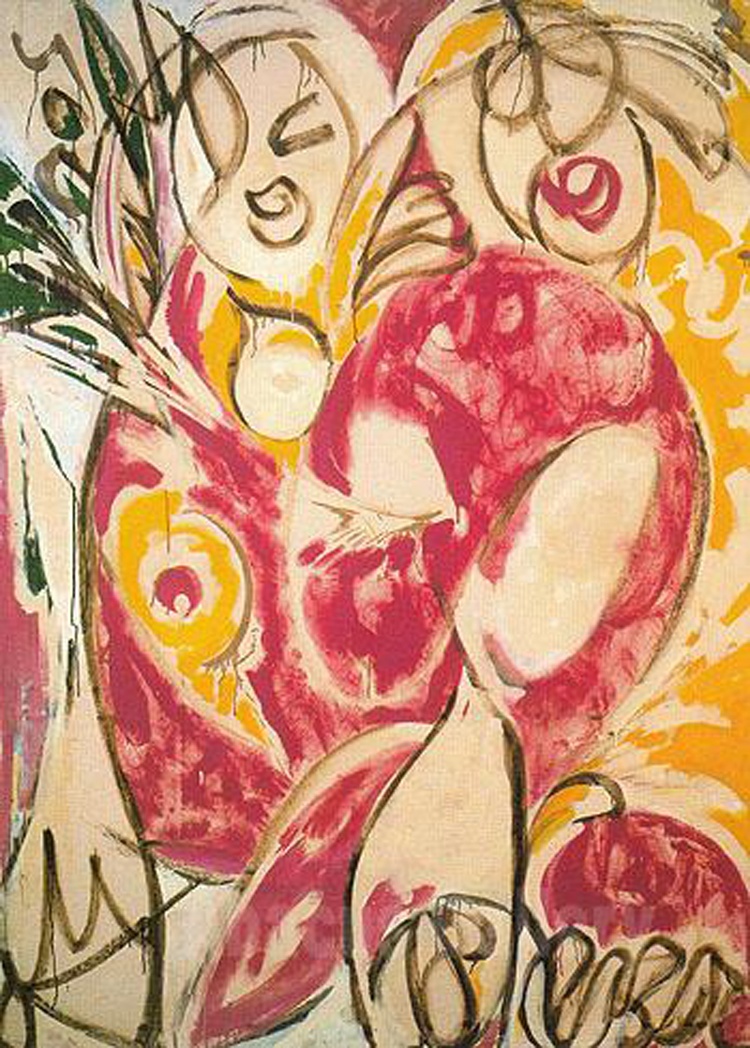
In one of the largest sales of the show’s first day, Paul Kasmin Gallery placed Lee Krasner’s painting Sun Woman I (1957) in a collection for $7,000,000.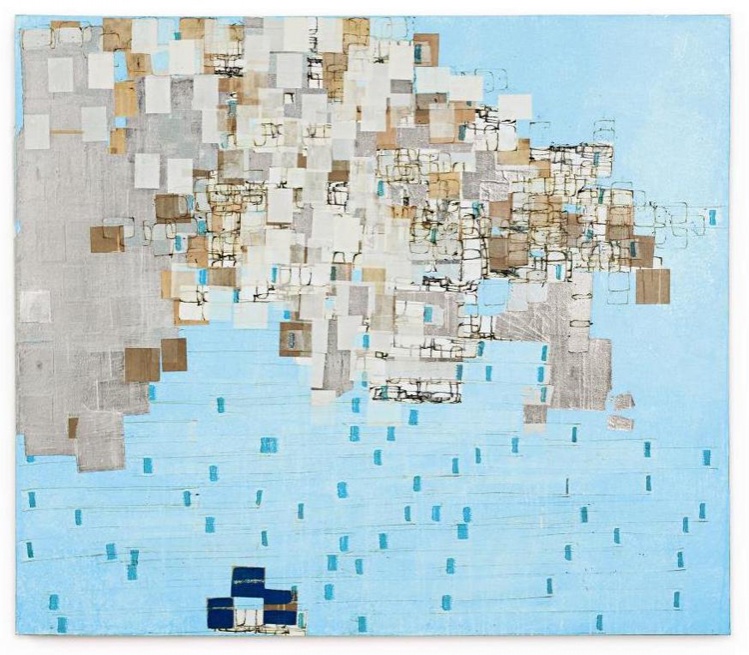
The New York-based Mnuchin Gallery sold Mark Bradford’s Fly in the Buttermilk (2002) for $3,000,000. 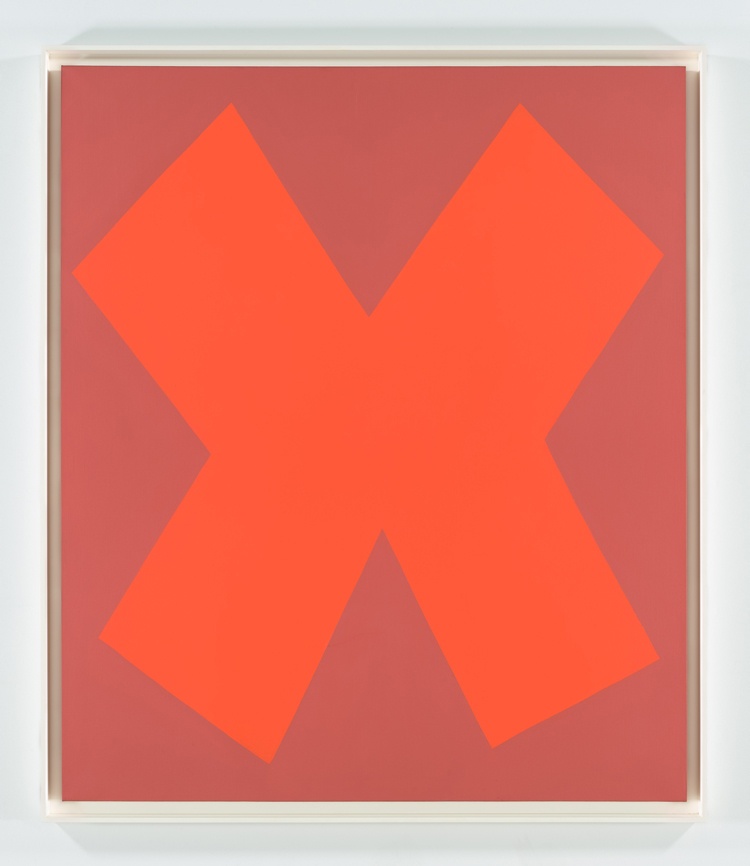
Lévy Gorvy Gallery sold Sumac by Ellsworth Kelly (1959) for a sum estimated to be in the $ 4-5,000,000 range.
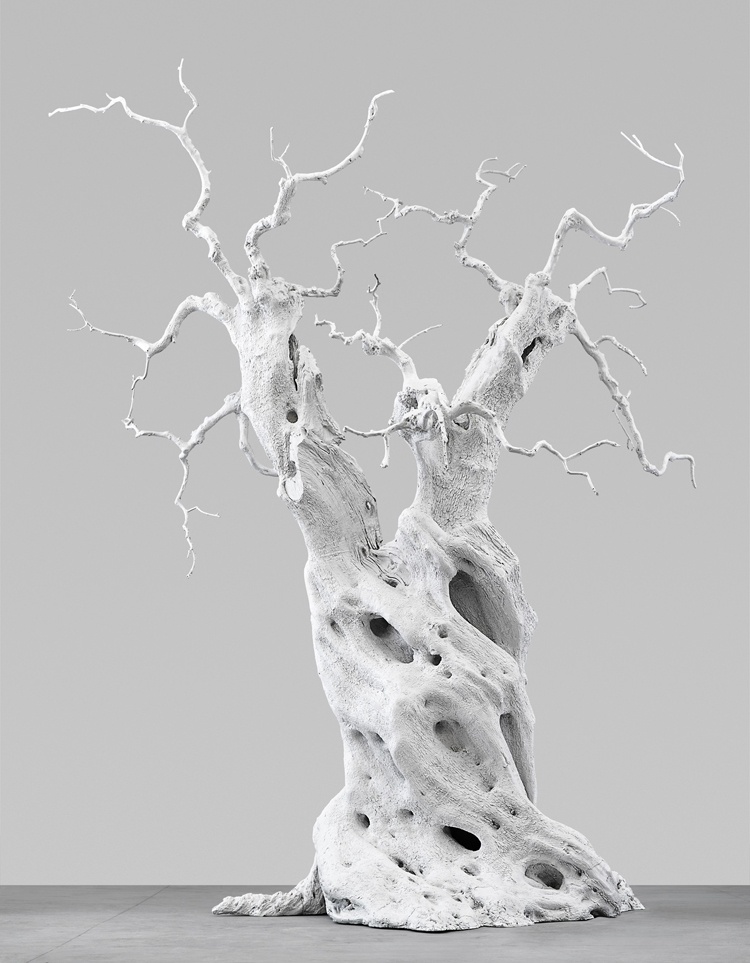
Eva Presenhuber sold Ugo Rondinone’s sculpture Hunger Moon (2013) for $1.2 million.
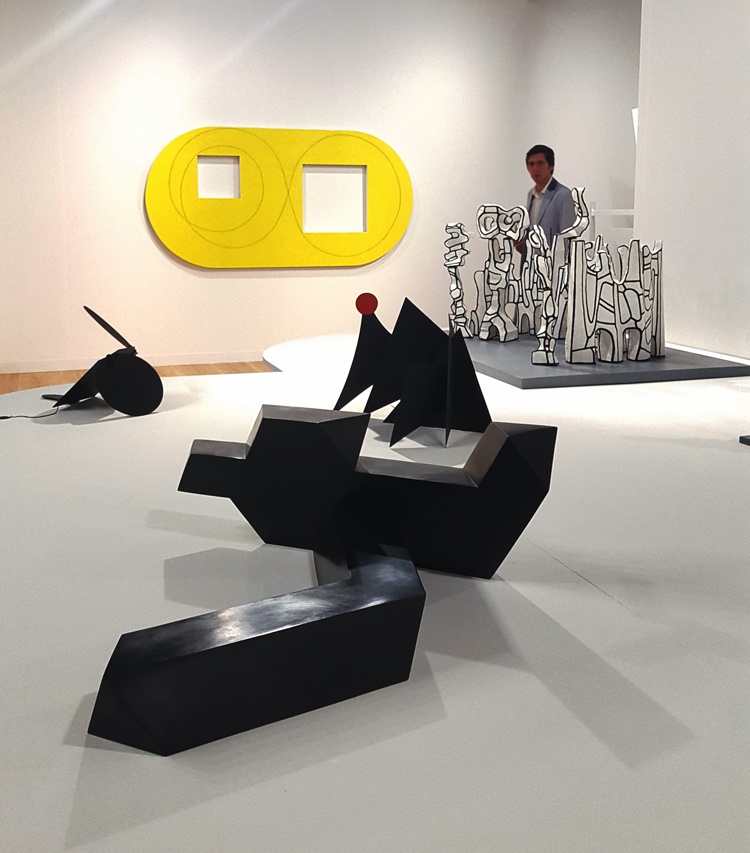
Pace Gallery also reported high sales. Young Mother by Yoshitomo Nara (2012)sold for $2.9 million. A set of silkscreens THE NEWS by KAWS(2017) brought in a whopping $4.5 million. Besides, Willem de Kooning’s Untitled (1967) sold for $450,000, and Michal Rovner’s film Urgency (2017) sold for $140,000. Joel Shapiro’s bronze sold for $350,000.
Max and Julia Voloshyn